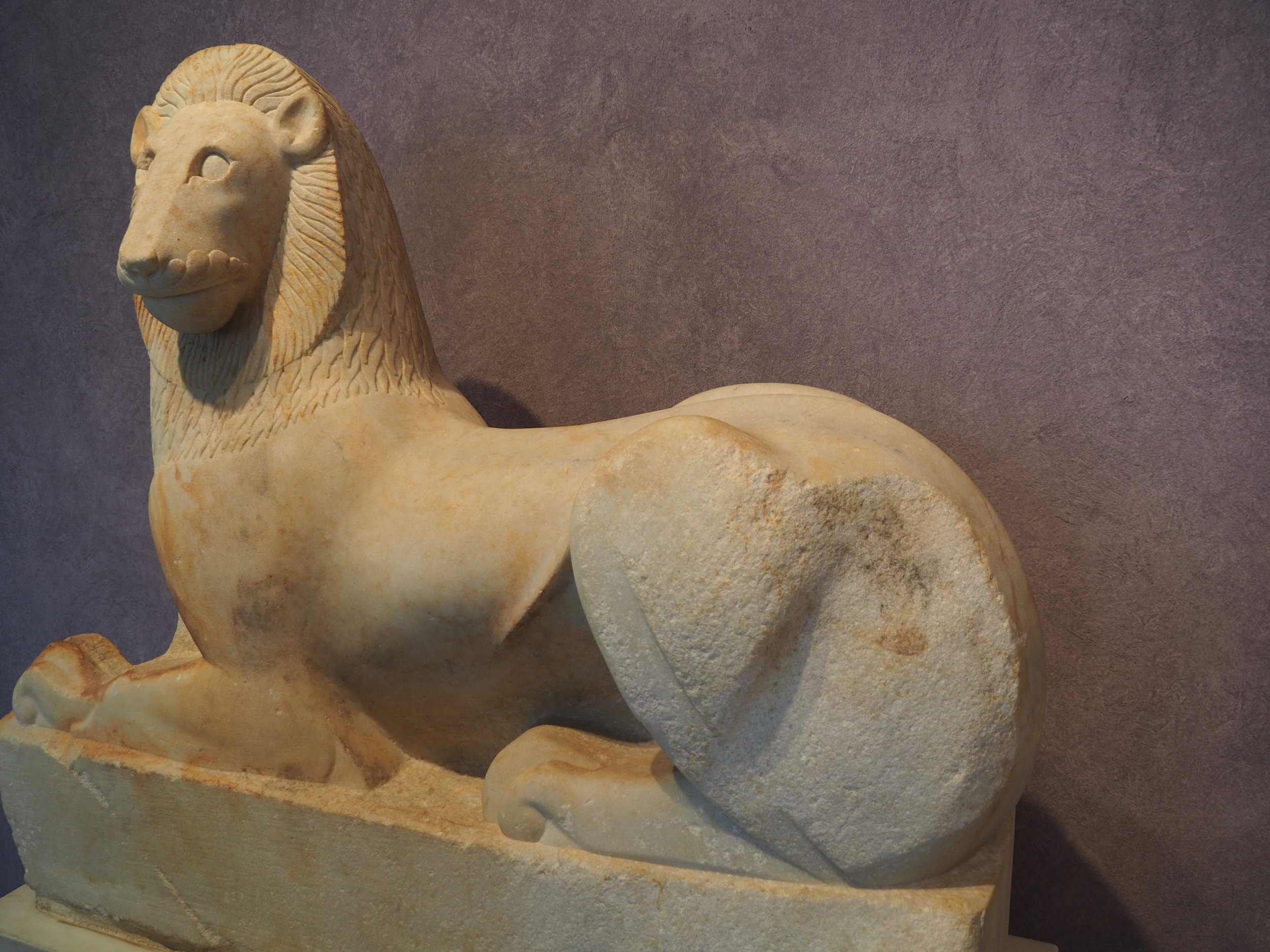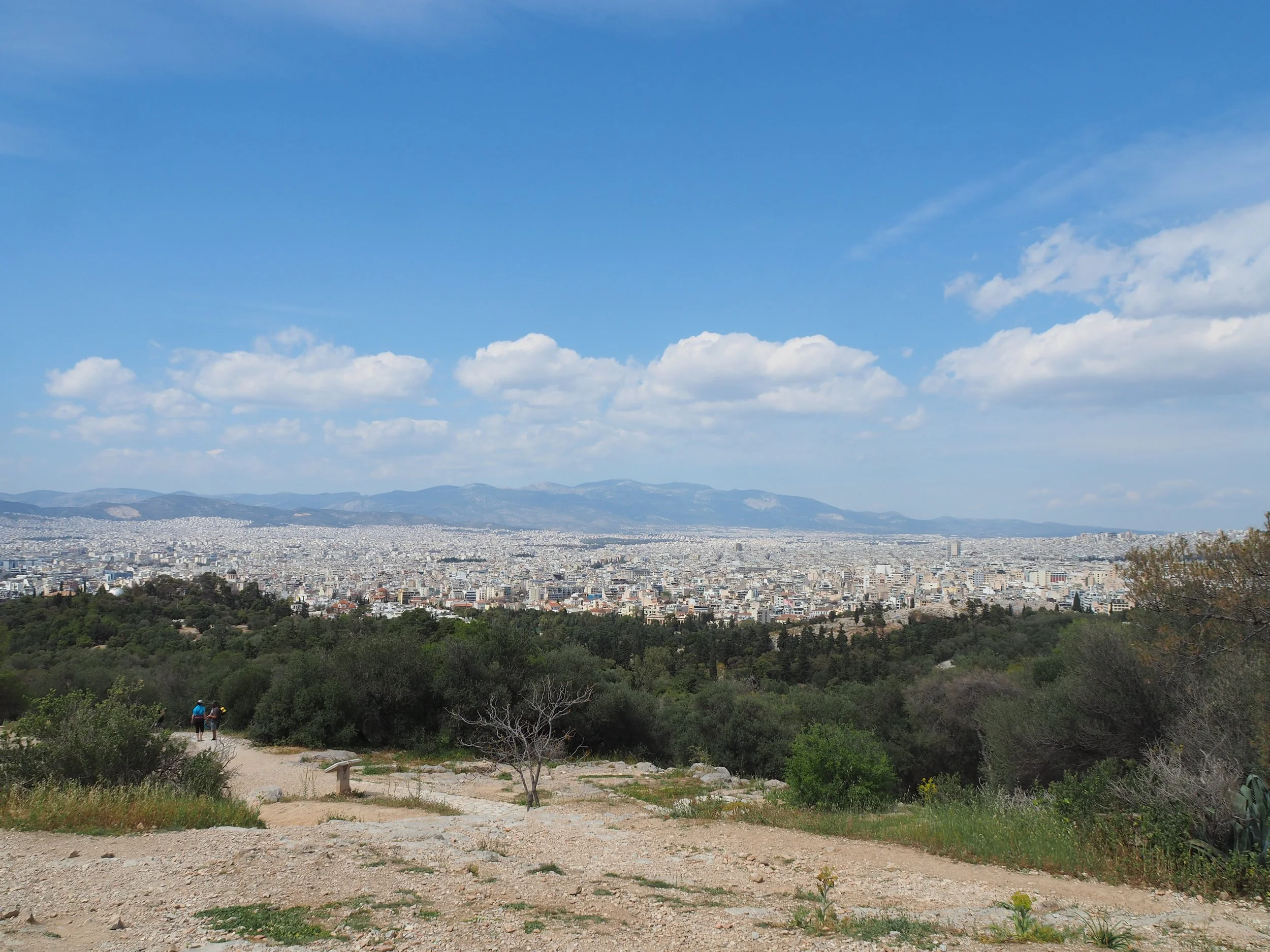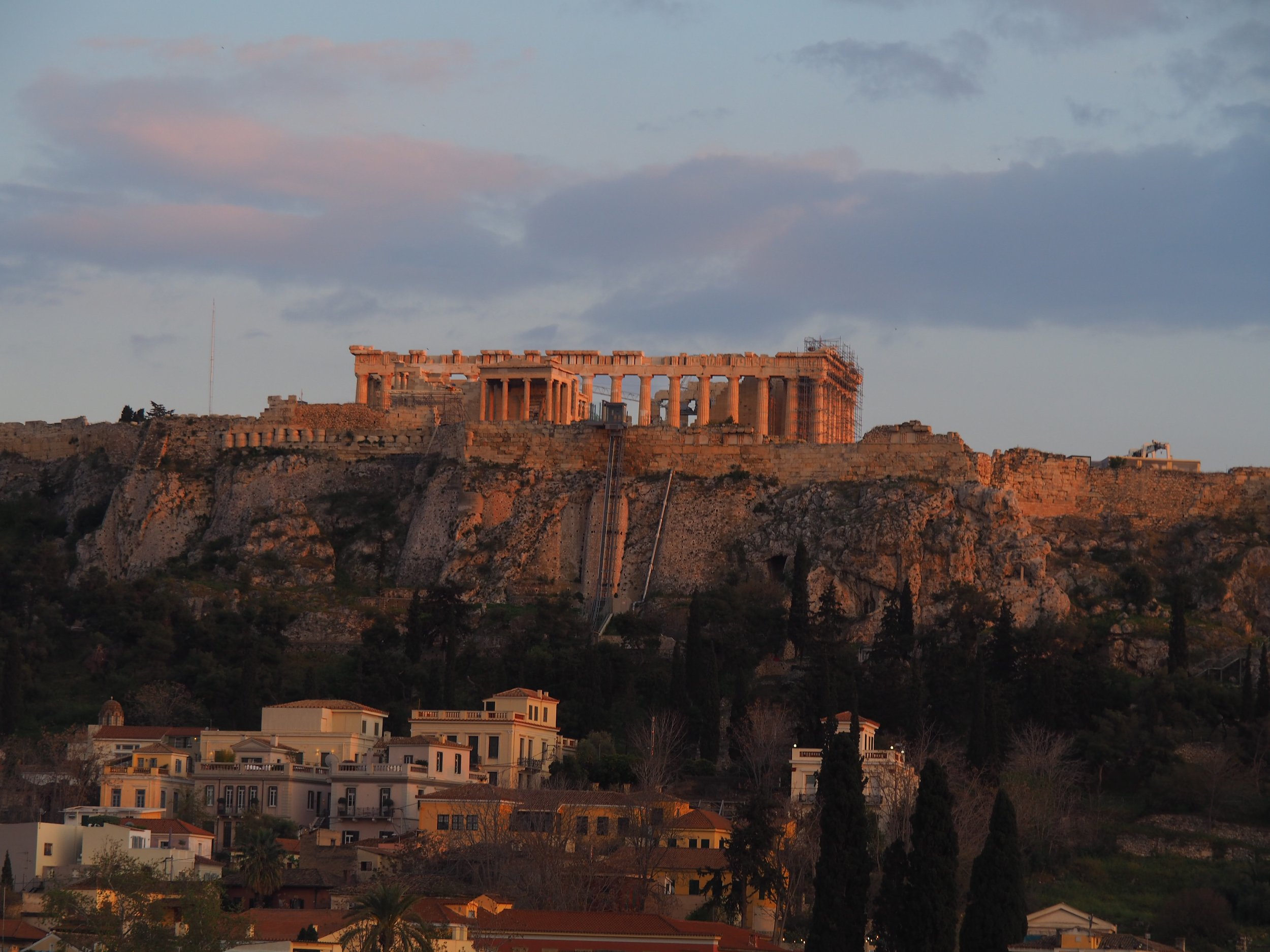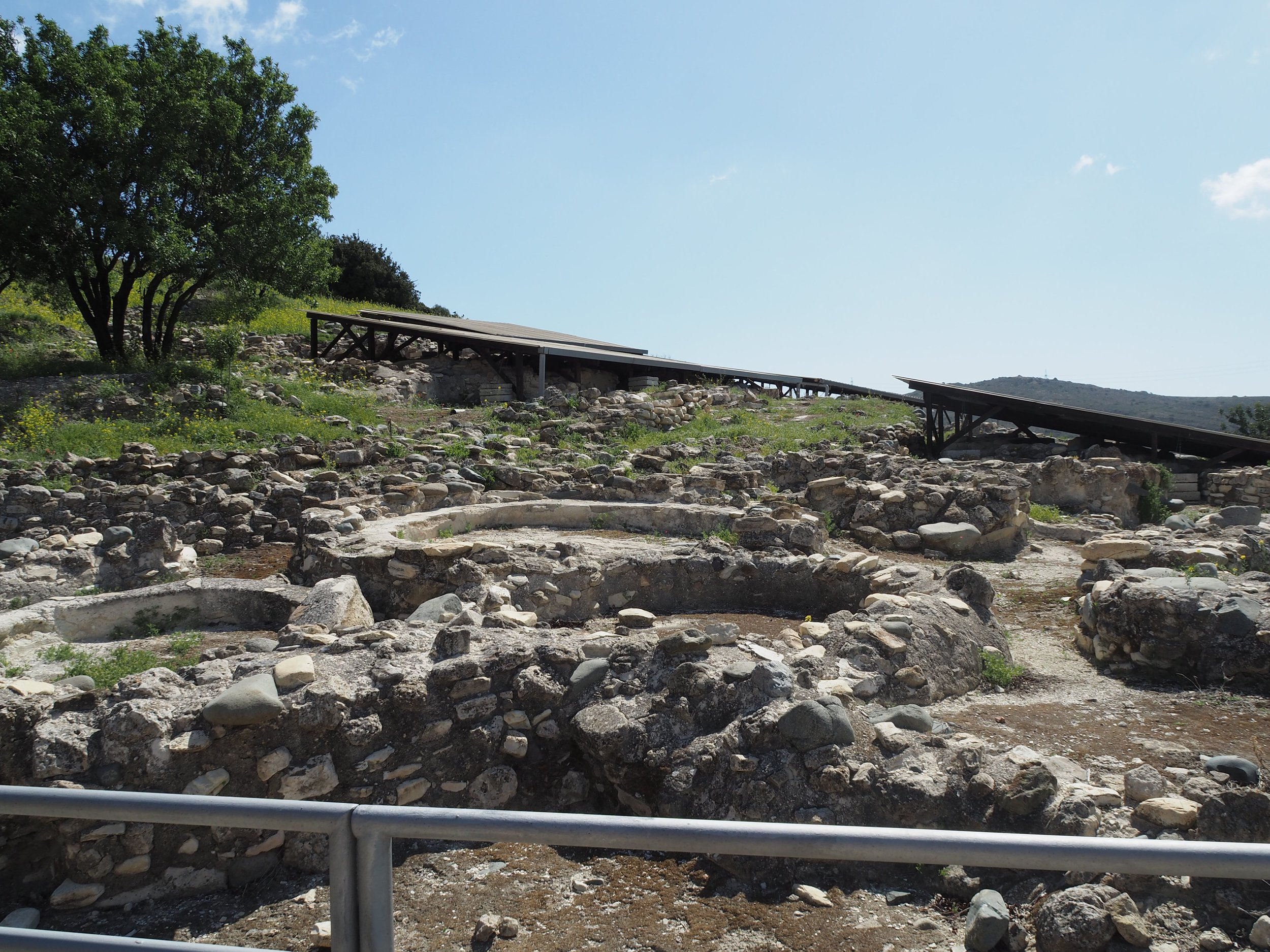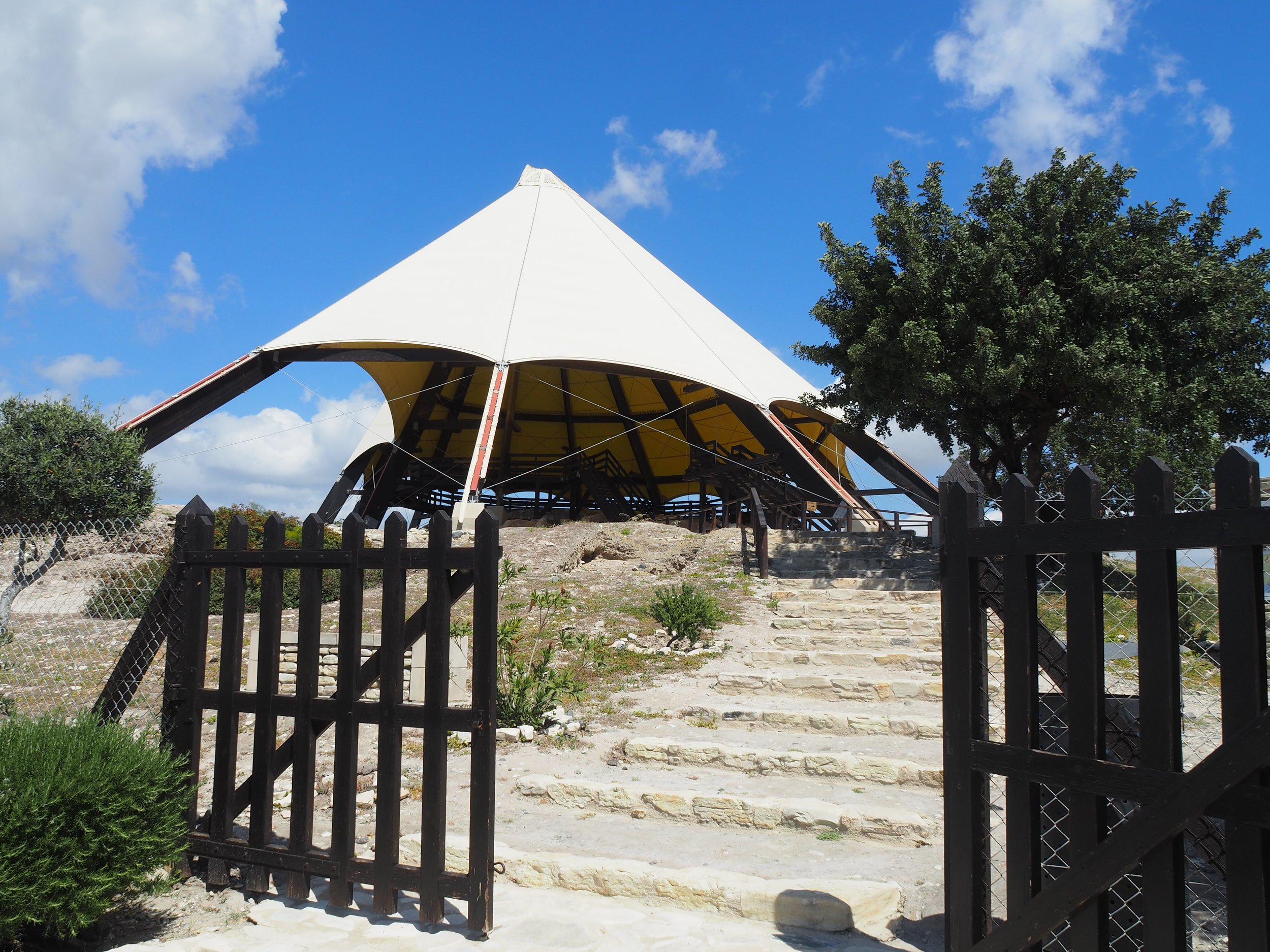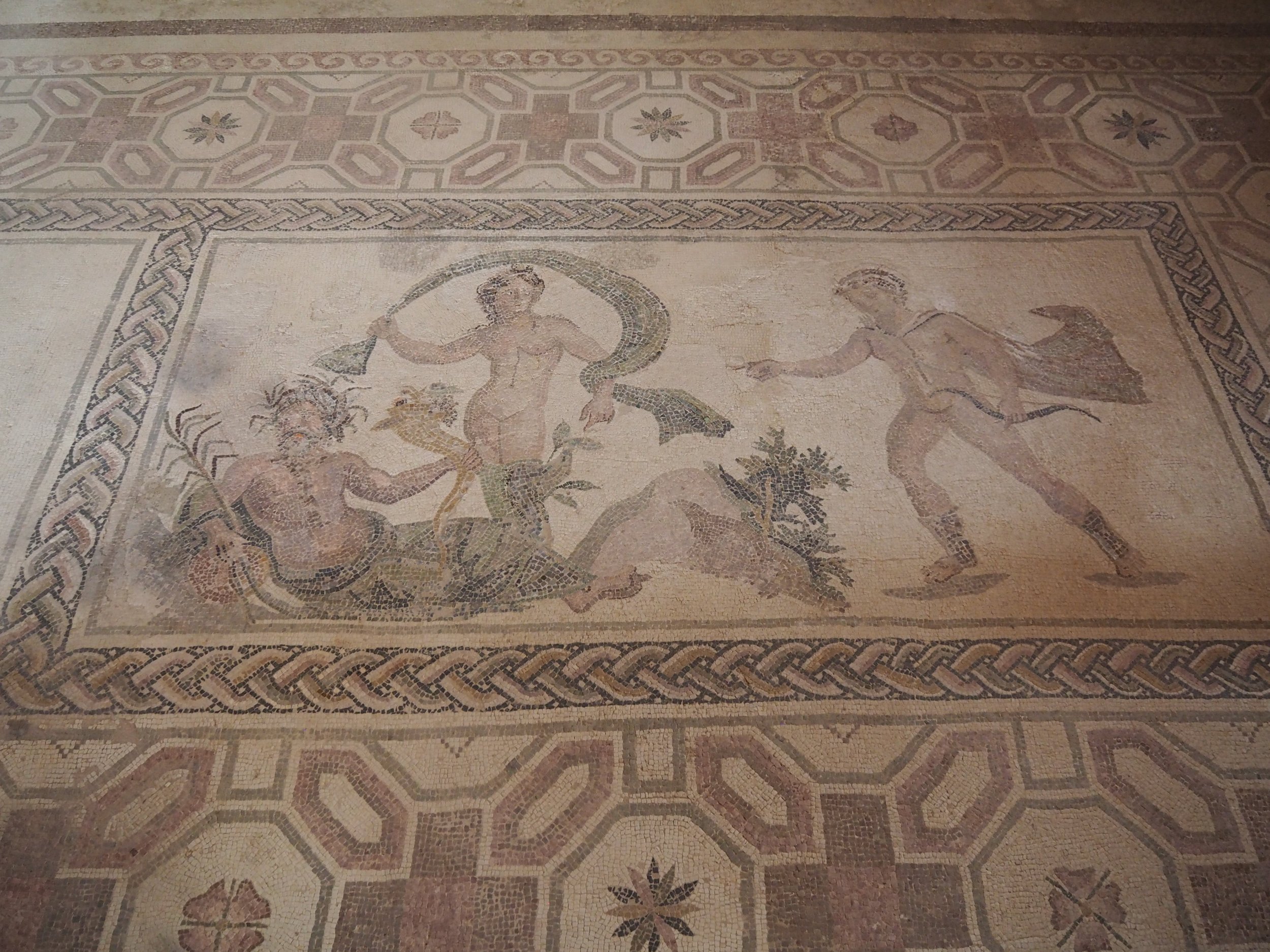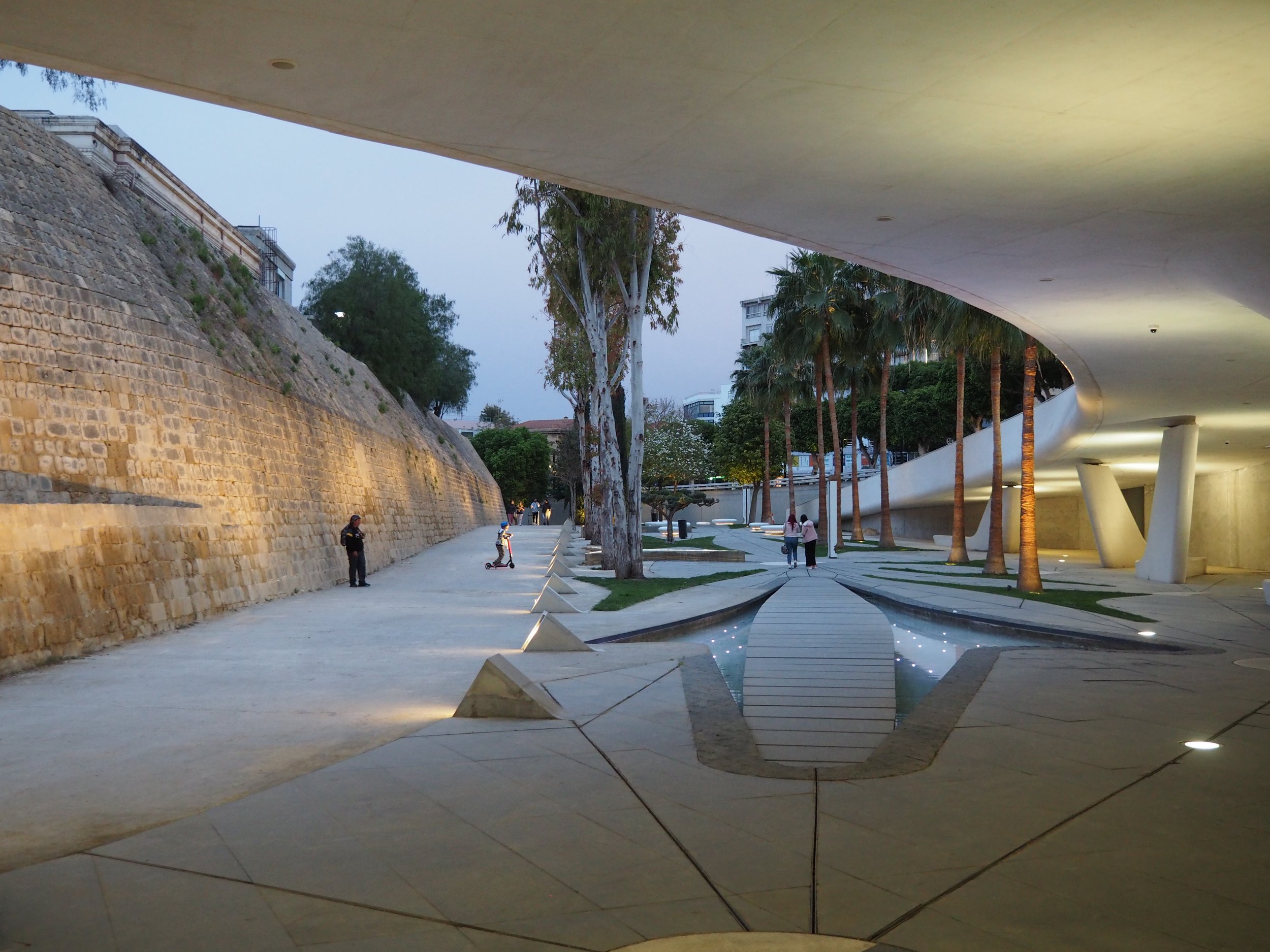Cyprus and Athens 2023
First, my deepest apologies to Cyprus. I gave Greece credit for the wonder that is Halloumi, and that honor instead belonged to Cyprus. I will prove how apologetic I am by eating Halloumi with every meal here in Cyprus.
With that out of the way - the brilliance that is Cyprus. Some amazing archaeology, incredible wine, and some of the best food in the world, this is an excellent place to visit but not when it’s so hot that your eyeballs sweat. Unless you really love the beach.
Getting to and from Cyprus
I don’t normally do a “how to get here” section, but Cyprus can be a bit challenging. Not as challenging as Bulgaria was for us, but there are a few options. The two main airports are Larnaca and Pafos. We flew direct New York JFK to Athens, then collected our luggage and transferred to an Aegean air flight to Larnaca. Larnaca is the easier airport to get to. And it’s only about 45 minutes from here to Pafos (maybe less), so it’s a great way to get in. We rented a car and drove everywhere. It’s a small island, and our longest single drive was an hour and forty five minutes. It’s very easy to get around with a rental car (shout out to the Enterprise Rental Car/Alamo that we rented through - they were super nice and a please to deal with.) Just be prepared to drive on the British side of the road. Also, apparently driving into the Green Zone, while possible, is complicated. It was far easier to drive to Greek Lefkosia/Nicosia, park, and walk in. I’ll explain more in the Nicosia section.
Larnaca
Larnaca was a great place to start out trip. It’s a lovely city and you can easily see many of the sites without needing transportation. We stayed right on the water and it was lovely. Larnaca was an important town in ancient times (Kition) and was of particular importance to the Phoenicians (you know I love me some Phoenicians.) It was important for the worship of the goddess Kypros, who eventually merged into Aphrodite and Astarte and Hathor. I’ll do a video about syncretism and connect it here, I promise. It gets confusing.
Some highlights of our time in Larnaca include the Church of Saint Lazarus, the Larnaca castle, ancient Kyrenia, and of course the Larnaca museum. It’s a very easy city to navigate, and traffic was surprisingly light. We easily walked to many sites, though I imagine that same walk in the hotter times would be kind of brutal. Don’t expect shade in Cyprus. One of our absolute delights was the Oak Tree Wine Bar. We popped in for a tasting, and the owner is an absolute delight. I think I’ll include a section on Cypriot wine later, but I learned so much from him. We got to try some great wines and had an excellent time. Stop in if you can.






Tips and Tricks
Most museums and sites have last entry 30 minutes before close. So keep that in mind when planning. We flew in from Athens and arrived in late afternoon. We ended up walking to the Church of Saint Lazarus, which is an absolute do-not-miss. Unfortunately no photos because I wasn’t sure about permissibility, but you probably can take photos. From there, we went to the Oak Tree Wine Bar. Go there. It was possibly my favorite place in Larnaca.
We started the next day by picking up our rental car and parking it. On the way back into town, we stopped at Hala Sultan Teke, and active mosque right by the salt lakes. It was really easy to visit and lovely. We were dressed okay (t-shirt and capris is fine) and the gardens were lovely. Also, we were able to visit the flamingos that visit the salt lakes. Loved that.
After parking near the hotel, we walked up to the ancient Kition archaeological park and had a nice time. Good signs for a small site. Really nice and an easy start to a trip. The next stop was the Larnaca Municipal Museum, which is free! And well-worth it! It gave us a great explanation of the history of Cyprus and actually helped us anticipate and plan for what we would see later. Well-designed and laid out. An excellent museum, and you can’t beat the price. We also went to the Pierides Museum, which was fine. I think later in the trip we wouldn’t have been as impressed, but it’s a nice small museum in a lovely building. A nice visit, if not a must-see.
We then proceeded back to the waterfront and went to the castle. It’s a small site that does have some interesting information. I’ll be honest - I was distracted by the lizard fight. It was epic. By a certain definition of epic. But it was nice to visit and does give some excellent sea views.
We stayed at the Sun Hall hotel, directly overlooking the sea. It was lovely. I kind of expected a little behind times but it was fabulous. After we got our rental car, we were able to park by the marina. Since their ticket machine was broken, it was a straight 3€ fee for parking as long as we were there. Be careful not to park in the Yacht Owners area (unless you have a yacht, in which case, can I join you next time?)
For food, you have a lot of choices. For our first dinner, we ended up at Alexander, right on the water. The food was excellent, the service was great, and the wine was amazing as is expected. The prices were probably a bit higher than other places because it’s on the waterfront, but it was quite good. For lunch the next day, we went to Hobo, which was also quite good. Good food, good service, lovely location. Dinner the second night was at Vinaria. It was excellent. Fantastic service again. Get used to that phrase.
I honestly don’t think you can do a bad meal in Cyprus. Oh, and I already touted it, but the Oak Tree Wine Bar. So great. Loved it there, would go every night if I live in Larnaca. I’d be a fixture.





Ancient Kition
A bit of a walk up from the water, this is a small site but it’s worth the visit. There are some interesting remains of temples dating to different time periods. There are at least 3 different phases during which certain buildings were constructed, expanded, or repurposed.
It is a very small site with a main central walkway that allows you to get a better view of the central temple complex. The signage is very good and gives you a really good way of understanding what you are looking at. Not the best site in Cyprus, but well worth a visit if you are in Larnaca.



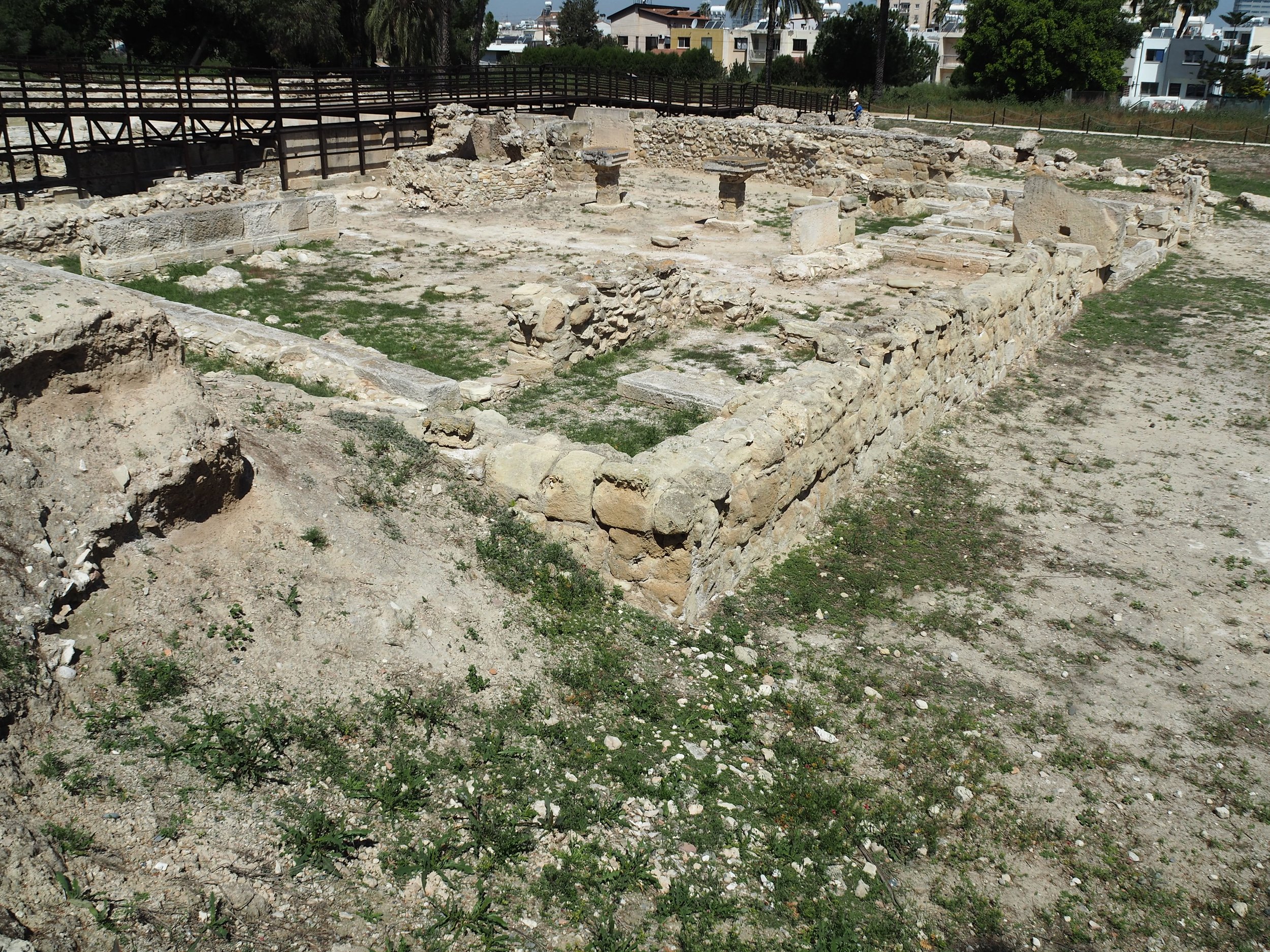

Choirokoitia
This is one of the largest and oldest sites on Cyprus. Originally inhabited by the pre-ceramic peoples of Cyprus in around 7500 BCE, this large village was shifted and inhabited in different waves until around 6000 BCE, at which time the inhabitants seem to have moved elsewhere on the island.
It’s an interesting site that reveals a lot about the history of the island. There were a number of burials discovered here that showed that many were buried under houses with only a small number of grave goods. The round houses of the site also include a wall that seemed to function not for protection, but to delineate the town.
The site is well worth a visit. It’s easy to get to with good signage. As of 2023, entrance was 2.50€. It’s a bit of a hike up to the main part of the site, so not great if you have trouble with that. The lower part with the reconstructed neolithic buildings is easily accessible. Highly recommended.






Kalavasos Tenta
This is such a neat little site. It’s another neolithic site, covered by my favorite archaeology covering that I’ve seen so far. It was a habitation during the chalcolithic period, and is one of the better-preserved sets of neolithic dwellings on the island.
Entrance was not very expensive (2.50€) and is quite easy to park at. The path around the dwellings is a metal walkway with some stairs, that least to some excellent views of the site and excellent explanatory signs. Really worth the visit.






Amathous
Oh goodness, Amathous. This is such a puzzle of an archaeological site. There is an easy parking lot right off the highway leading into Limassol, and there is a clear entrance with a 2.50€ fee. And there are some nice signs at the entrance about Aphrodite (similar to those at Kition and Pafos.) But then when you go into the site - nothing. No signs. No idea what you are seeing. The space within the main park is the Agora and has some standing columns. And then there is a shop/housing section that is along the path to and from that section of the site. And that’s it. At least, that’s all that is within the site.
Turns out the better parts of the site are outside of the paid sections. If you have the road to your back and the entrance to the paid section on your right, before you go in, you will see some archaeology with some steps leading up. That is the path up the hill that will bring you to the big royal palace complex and the main temple of Kypros/Aphrodite. We completely missed that our first visit. It wasn’t even until we went to the Limassol museum and saw satellite photos that we figured it out. So we went back and asked questions. Because you wouldn’t know to go up there any other way.
So, do I recommend Amathous? It is clearly the weakest of the main sites, but I am a completionist and did enjoy what we saw. The free section is actually pretty cool. I just hope that the lack of signs in the paid section is because they are working on putting new ones in.




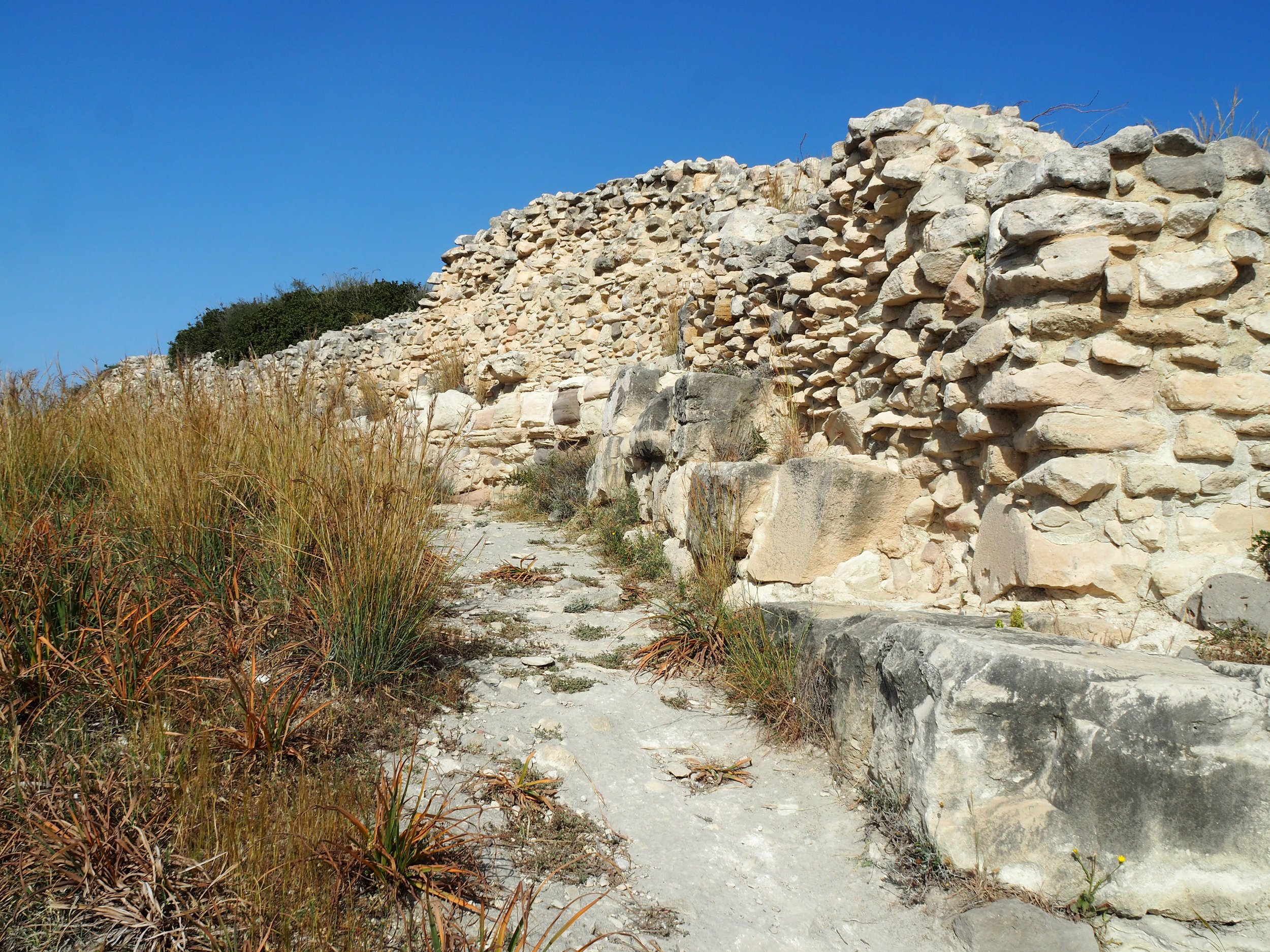


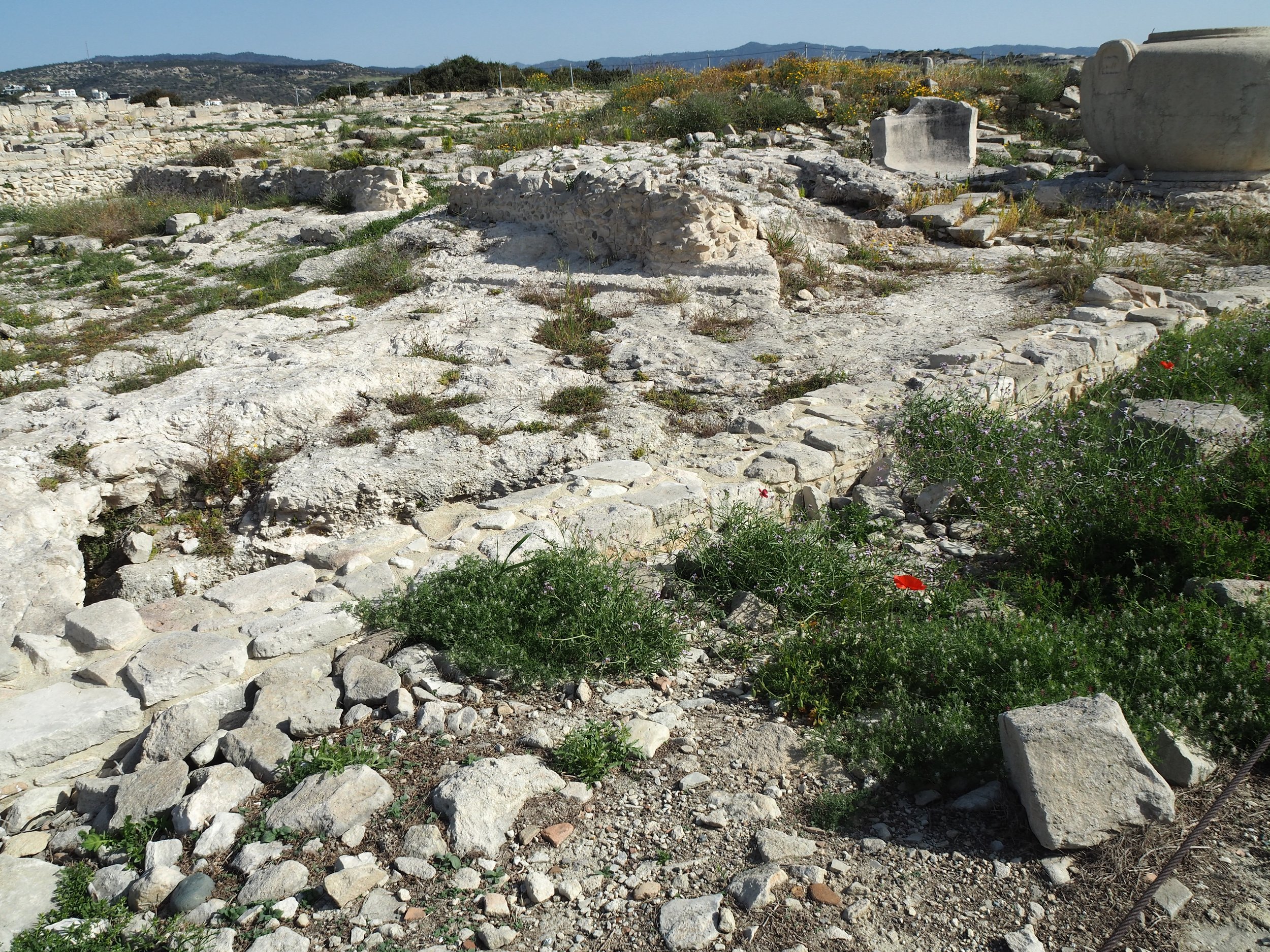

Limassol
A lovely city on the water that has a lot of skyscrapers, this city does have some really nice things to see for the non-beachgoer. We stayed a little out of the city, but it worked out well. Parking is a little tricky in the main part of the city, but it wasn’t too bad. And there is a lovely walkway that extends all the way along the beachfront. Technically we could have walked the whole way there and back.
We did find a few of our trip highlights on this trip. The ancient city of Kourion is amazing. Just fantastic. Best of the ancient cities we saw. Also had a great time stopping in at the Cyprus Wine Museum and trying their wine and learning more about the history of winemaking in Cyprus.









Tips and Tricks
We stayed at the Royal Apollonia, right on the water. It’s a bit pricey, but we had a lovely room with a balcony overlooking the Med. As they were checking us in, they brought sparkling wine and cool towels, so that was a plus. The only downside is that where this (and many other of these resort hotel buildings) is located is not close to the center of Limassol. We ended up finding some great places to eat, but central Limassol by the castle is such a cool area that I was disappointed to not be able to spend much time there.
As I said above, and will have a separate section for it, Ancient Kourion is possibly (probably?) the best site on Cyprus. We started out at the Sanctuary of Apollo Hylates, which is separate but near the main site. It really should not be missed. Then we stopped by the ancient Amphitheater, which was more like an ancient circus in that it is much longer than it is wide. And it is very long. The the main side of Ancient Kourion. See below, since I have so much to say about it.
After the main archaeological sites, we stopped at the Cyprus Wine Museum (https://www.cypruswinemuseum.com/ .) It’s a great building with an impressive history of winemaking in the region (especially the famous Commandaria which originated in this part of Cyprus and eventually gave rise to the famous Port of Portugal.) The building the museum in is really neat, parking is easy, and the history and wine are fantastic. They host music on certain days, and I’m sure it’s wonderful since the space has great acoustics.
We then drove a very short way to Kolossi castle, a crusader castle that was built on the coast. The original castle was built in the 1200’s by the Franks as they used Cyprus as a base for their invasion of Jerusalem. It also was owned by the Hospitallers and the Templars at various points. It’s a neat castle - not much left inside but the view from the top is quite impressive.
After the morning, we stopped by the archaeological museum. We parked down by the waterfront and walked up to the museum. Once again, it was free, always a plus. The older part of the exhibit had decent explanations, but where the museum really shines is in the newer section on Amathous. It was actually through this exhibit that we learned that we had missed most of the site during our first visit. The collection is quite impressive and well organized. We learned a lot about both the particular site, but also the history of that section of Cyprus.
As we wandered back to the waterfront, we popped in at the Limassol zoo. It’s very small, but has a decent collection of local and exotic animals. The habitats were surprisingly decently sized considering the size of the zoo, and the animals all seemed in good health.
We wandered the rest of the way back to the waterfront through the public park that hosts the Limassol Wine Festival. By the water, we stopped for some lunch and then proceeded toward Limassol castle. The park by the waterfront there in Limassol is absolutely wonderful. It’s great that there is pubic space for anyone who wants to visit the beach, and there is a lot of green space, shade, and fountains which really gave the whole area a cheerful and calming vibe.
The castle is actually further into the old part of the city. I am so glad we went there. It is surrounded by a revitalized old section where a ton of restaurants and shops fill in every old building surrounding the castle. It was an absolute delight and I wish we had been able to go there for dinner. However, when you’ve been out in the sun all day and need to drive back to your hotel, you know how risky it is to settle in at a cute restaurant when you’ll have to drive. So we headed back to the hotel and enjoyed some room service on our balcony.
For meals, we mostly ate at the hotel. The first night, however, we wandered down to High Chaparral, which was about 10 minutes walking from our hotel. The reviews are right, the octopus is amazing. Best I’ve ever had. It was a bit weird, though, since when we got there there was only one other table, and they left about halfway through our meal and we were the only ones there. The owner was very friendly, if a bit intense. It probably is a little better when there are more people there. It’s apparently super popular in the summer. So, I’d recommend it.
We had lunch the next day at Thalassaki, right on the water. It was a place where you order at the counter and then they bring you the food. We shared a meat platter which was just phenomenal. It allowed us to try some things like Cypriot sausages that we hadn’t had before. The location was great and the people who worked there were super friendly.

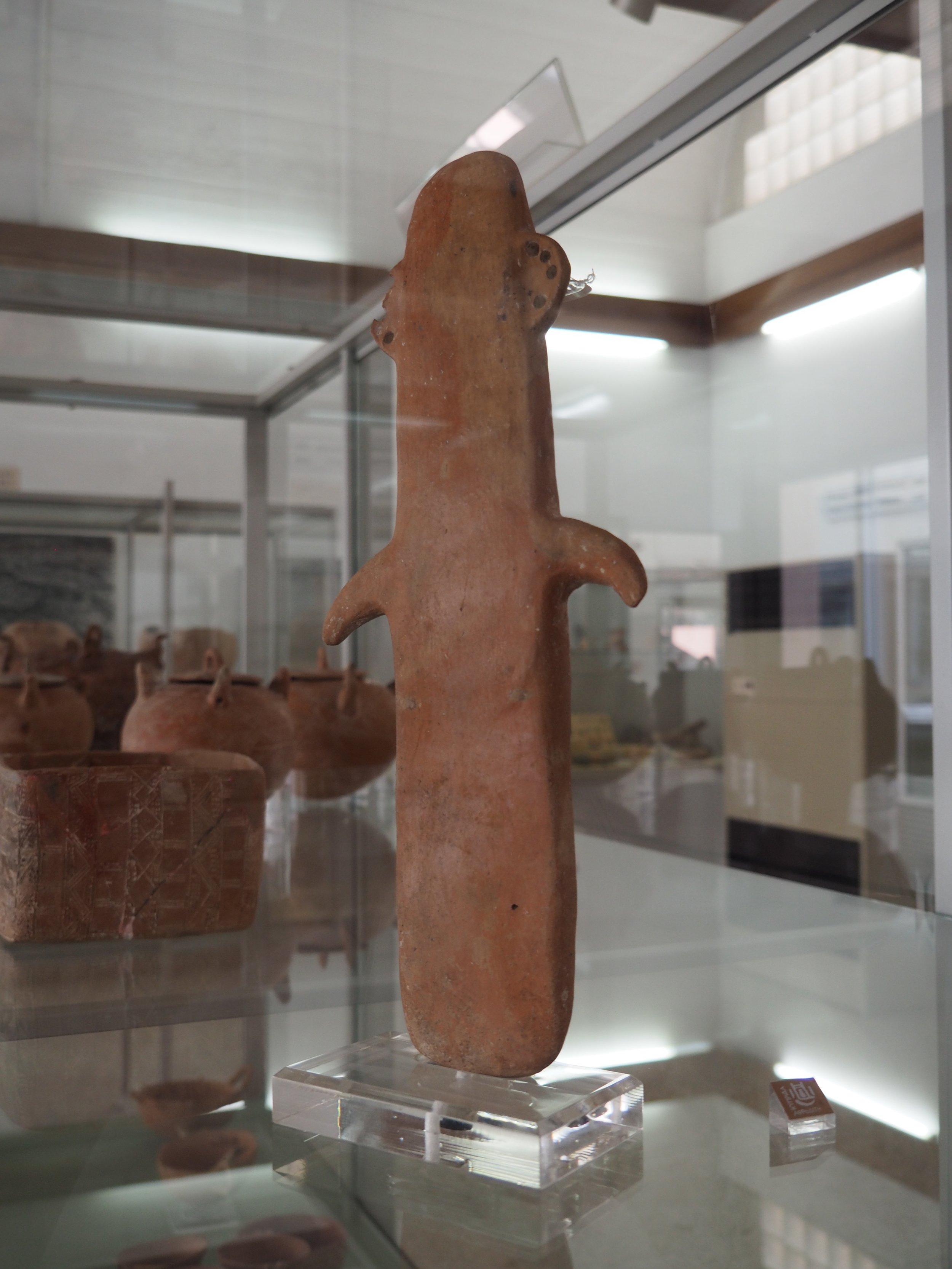





Ancient Kourion
Absolutely the best site on Cyprus. The main site has clearly been recently revamped and is the easiest to navigate of all the sites. It also helps that the view is amazing. But let’s start where we started - the Sanctuary of Apollo Hylates.
The Sanctuary of Apollo Hylates is a complex that is built on a high point about a 5 minute drive up from the main site of Ancient Kourion. It was a religious center and included the temple of Apollo, along with priests residences and other structure related to the religious center. It was also part of a main route into Kourion. The religious nature of the site predated the rise of Apollo worship and was tied to worship of a currently unidentified male deity. The current site is mostly what remains of the site from the Roman period. The part of Cyprus suffered a number of earthquakes at different periods, and so what we we see here and it other parts of the site are mostly from the 4-5th century CE.
As you go back toward the main site, there are the remains of the ancient amphitheater. As I said before, it is more of a circus than an amphitheater, since it is very long but not very wide. It was used as both, and could host wrestling contests and other similar events along with races.
Then as you head back toward Limassol, you follow the signs for Ancient Kourion. Unlike the other site, here you buy your ticket outside the entrance before you can drive to the parking. I don’t know how back the line could be during the busy season, but it was quite short for us. Once you buy your ticket, you drive through the gate and up to the visitor center. It is an impressive, clearly recent building with some very nice facilities. There you can get your guide to the location. It doesn’t have a lot of signs at the locations, but the guide has all the information you need.
We started at the House and Baths of Eustolios. It was built in the 4th-5th century CE and has some truly lovely mosaics. Apparently it was built after a series of earthquakes. The owner, Eustolios, was very wealthy buy intended this space to also be open to the public. It is particularly interesting because there is a strong combination of pagan and Christian motifs, an interesting view into the period of Christainization of the Roman empire.
We then proceeded to the theater, which is designed in the Greek style overlooking the sea. It is partially restored and hosts events during the season. It is really lovely and the view is pretty amazing. The next stop was the earthquake house, which is the remains of a building where multiple bodies were found indicating that it had collapsed during one of the earthquakes and never rebuilt. There was a period in the mid-4th century CE when poor Kourion suffered through 4 large earthquakes in less than 20 years. It is unsurprising that some buildings were left as they were after the last one.
From the earthquake house we proceeded to the end of the site and the House of Achilles (named after some amazing mosaics found there.) That and the House of the Gladiators have more of this really fine, colorful mosaic work that you also see in the House of Eustolios. Really impressive work.
The rest of the site is a combination of baths, the agora, the remains of a Christian basilica, and other public spaces. It’s easy to wander and has some interesting features. In the baths, for example, is an octagonal pool, which I hadn’t seen before.
As I said, this is an absolute must-see if you visit Cyprus. The walkways are easy to navigate, there is a lot of shade, and the remains of the site are really impressive. The Sanctuary of Apollo Hylates is a separate entrance (2.50€.) The main site is 4.50€, which is well worth it. There is a fair amount of parking, though it was busy when we went, which considering it isn’t the busy season yet, suggests parking might get tough later on. Don’t let that dissuade you, though. I can’t recommend this site highly enough.


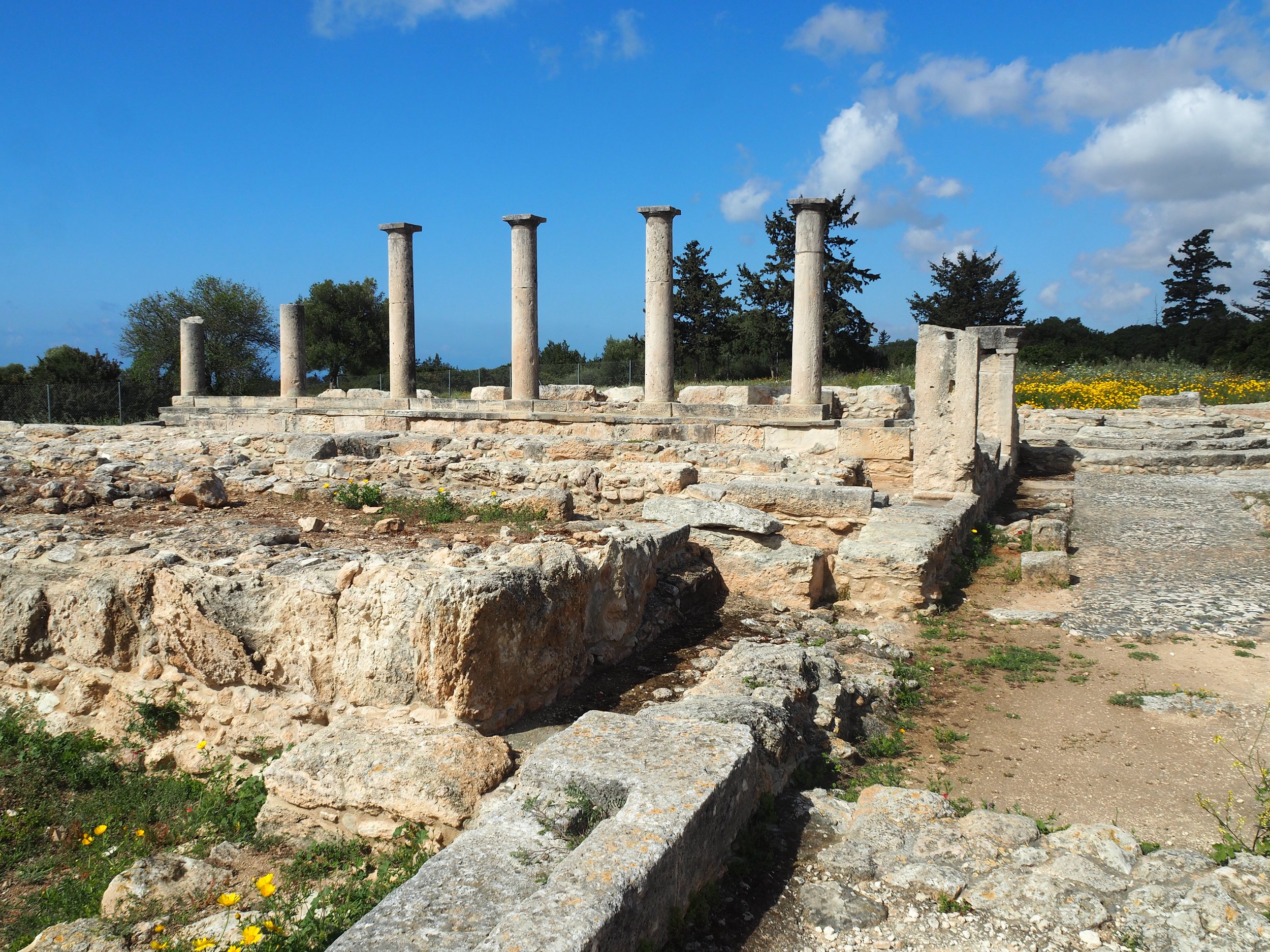















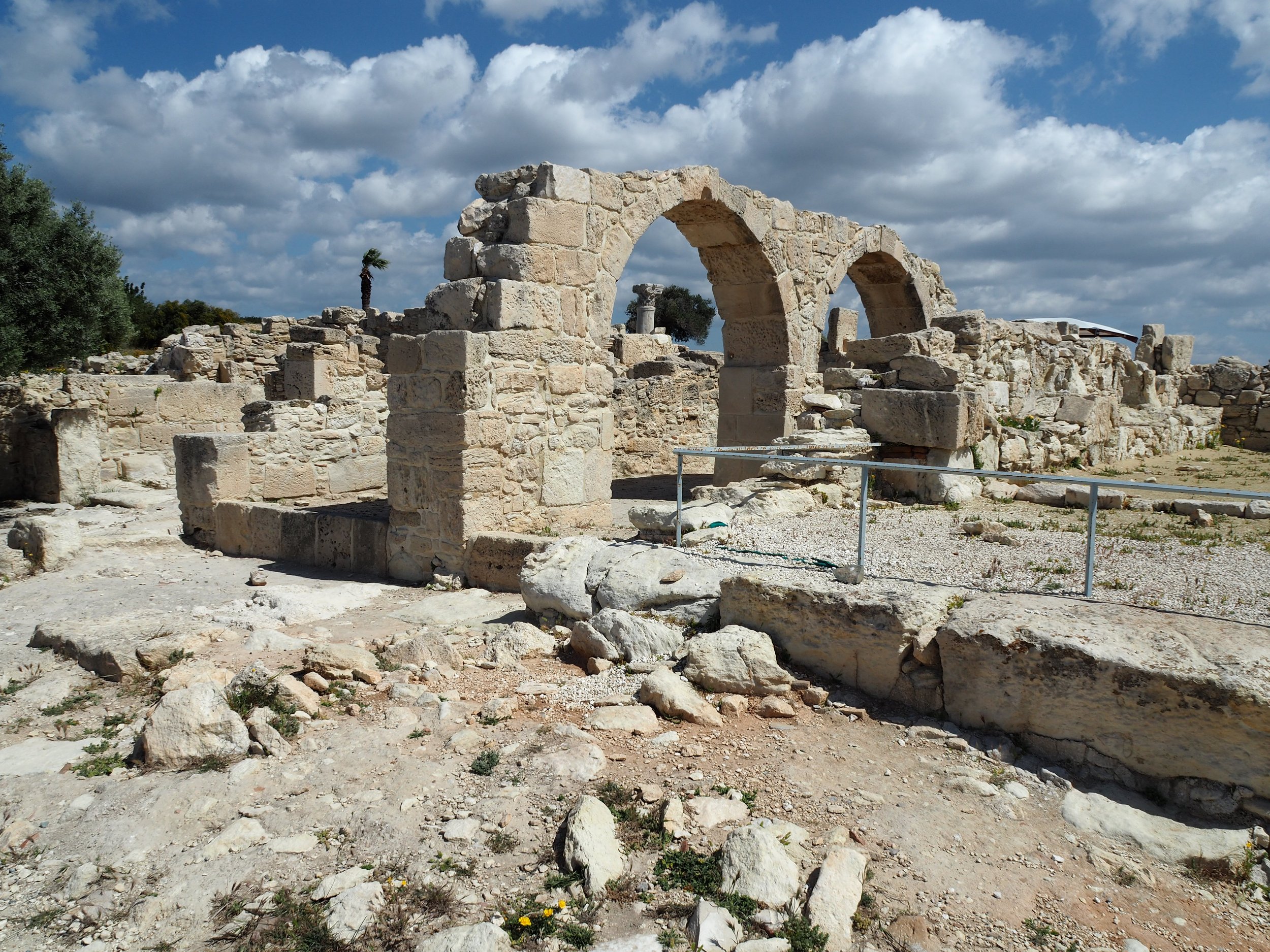




The Way to Pafos
I’m going to try to combine a number of places we stopped on our way to Pafos through the Troodos mountains into one section. First, the drive wasn’t bad, though it was a bit foggy and chilly as we got higher up. Second, if you are there in the off-season, go to restrooms and get food when you can. It is clear that this area is huge for tourists, but most of the restaurants and shops that we drove by were just getting stock in to open, so that was a bit tricky. Third, don’t trust Google Maps as to which roads are driving roads. We had a few times when we started to drive toward one of the locations but found that the “road” that Google was recommending did not seem like it could fit a car. We ended up parking a bit of a walk from our final destinations, which was fine, but it was a bit concerning when it happened.
We started off by hiking to Caledonia Waterfall. Don’t necessarily trust the TripAdvisor reviews of the site. There is a small parking area near a restaurant called Psilo Dendro which was full when we got there, and it isn’t the busy season. But we were able to park on the road, so that worked out okay. You start off hiking uphill on this roadway to get to the entrance to the hiking trail. And it is a hiking trail. We managed in sandals, but you should wear shoes that can get wet since there are few times of walking over damp ground. There is some amount of rock scrambling and the path can be slippery. I’d estimate that the whole trip up and back took us about 1.5 hours. The waterfall is lovely, and the hike has lots of shade, but it was still a hike.
Next we went to the Church of Archangel Michael, in Pedoulas. This very small church was built in the 1400s and has some lovely frescoes. This was one of the spots where we couldn’t get there from here. We ended up parking in a public lot by the main road and then walking down into the old town. The church was open, though no one appeared to be there and the alarm was going off. So we popped our heads in but didn’t stay long. It is a very small church, though, so it didn’t take long. We stopped in for lunch at the only place we could find that was open (I think it may be Platanos according to Google Maps, but who knows.) We were the only people there, but we got some tasty sandwiches and service was quick.
From there, we drove to the Monastery of Saint John Lampadistes, in Kalopanayiotis. This was another location where I think you could drive to it, but those roads were tight. So we parked at the public lot up the road and walked down. The Monastery is a really pretty complex of dark wood buildings, and the church has some lovely frescoes, done in the same style as the Church of Archangel Michael. The town is very cute, with a lovely park by the river and an old Venetian bridge. I bet it is quite a nice place to stay in the summer.
Next was Kykkos Monastery. This place was huge. First, the weirdest part was as we were driving up (and there’s plenty of parking and it’s easy to access) there were something like 8 cats just laying in the road. Just chilling. Then we were escorted by a persistent but not particularly friendly cat when we went inside. It is a huge complex and it is easy to end up at an entrance you didn’t go in and not be sure how to get back. It’s a very impressive complex, and they have some very nice frescoes (very similar to those previously seen.) They have a room for reliquaries so that was fun. Impressive and large, I guess would be my takeaway.
After that we finished our drive down to Pafos. The roads through the mountains were tight and windy, but well-paved and not terribly scary. It was nice to go through the mountains, but I think it probably is a better choice during the summer.





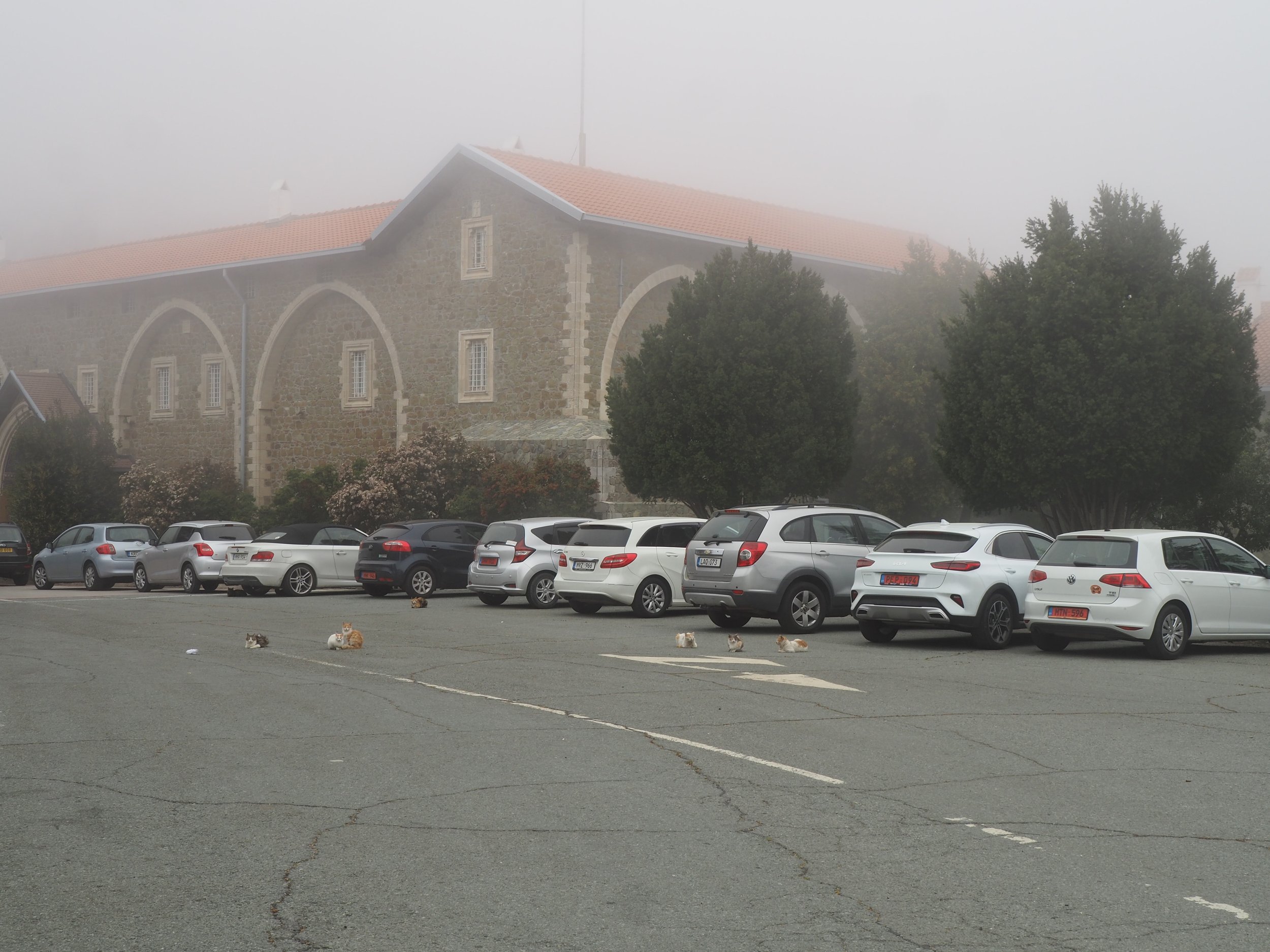





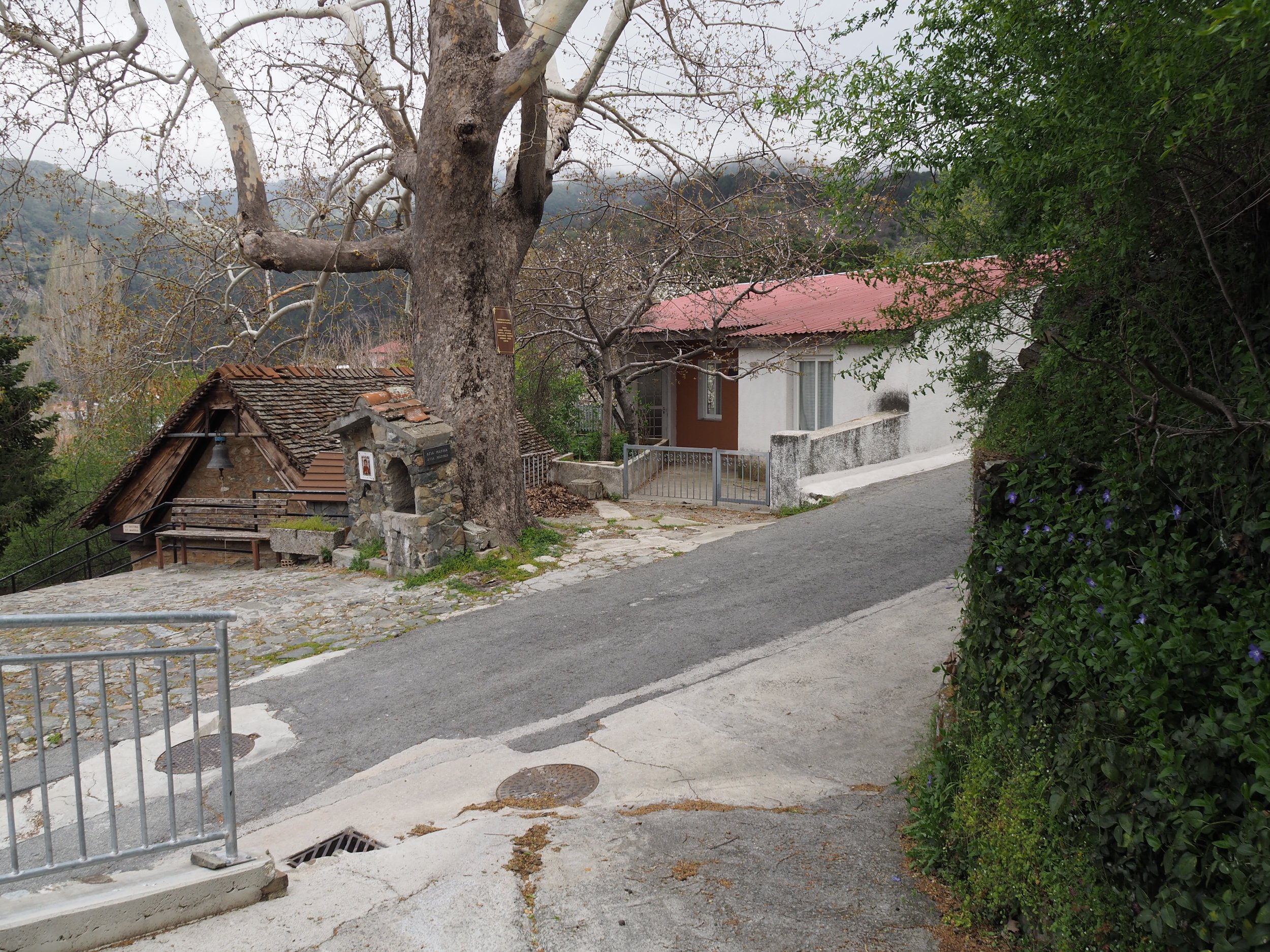


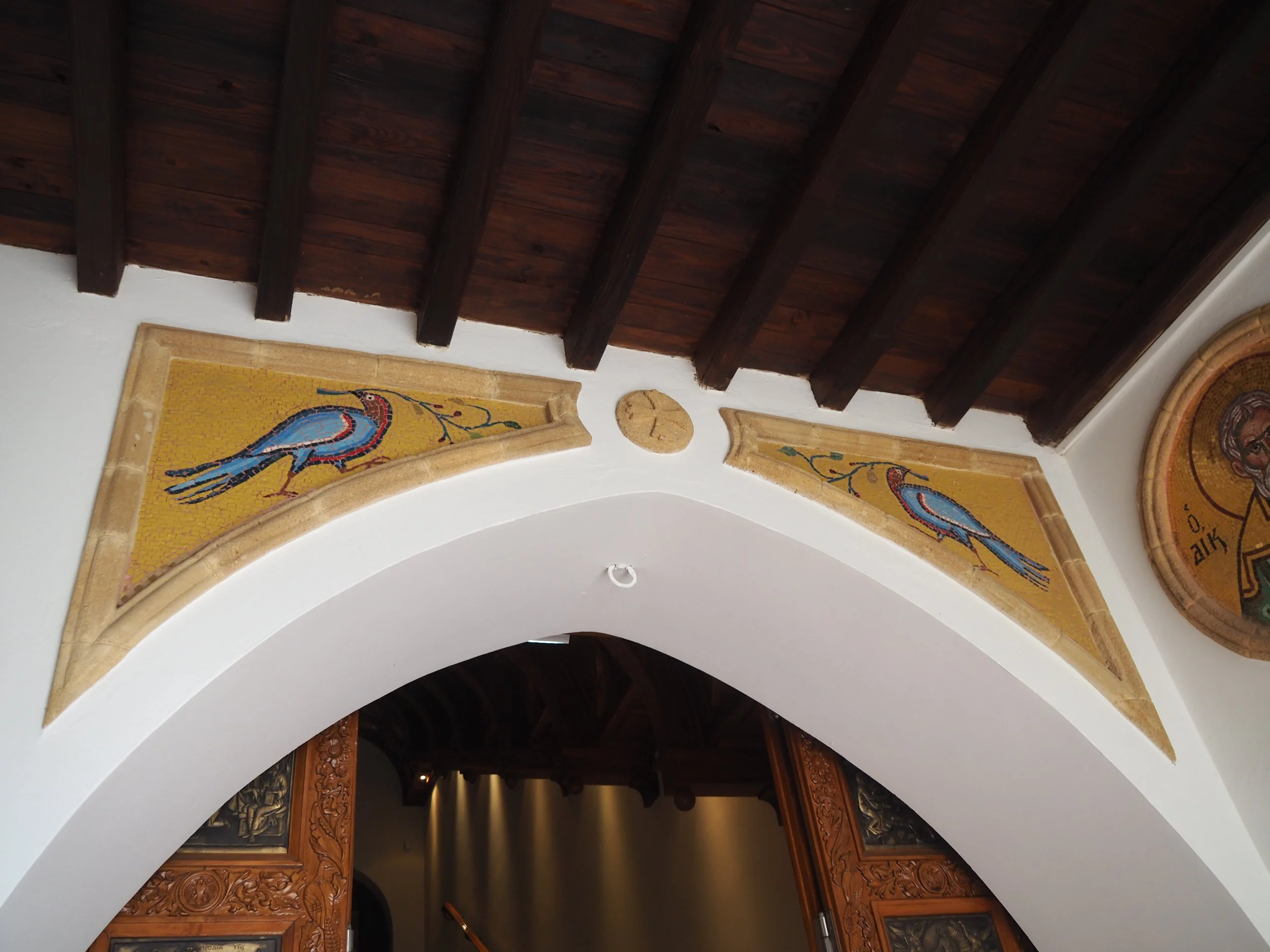

Pafos
Pafos is really fantastic. Once again, right on the coast (I mean, Cyprus is about 80% coast) and with a really charming older section with lots of really great restaurants. We stayed at one of the coastal resort hotels which was really lovely, and only a short drive into the heart of the old section. It didn’t seem as big or developed as Limassol, though I ‘m sure it’s just a matter of time, it also was home to probably the largest set of sites. We also used this as a base to go further up the island to the northern coast, which was a really lovely drive. Also, some of the best wine in the country.

















Tips and Tricks
On the day we drove into Pafos, we really didn’t have much time there. We stayed at the Kefalos Beach Resort Hotel, in one of their apartments. We had a balcony overlooking the beach and a small balcony the looked toward the archaeological site and lighthouse. It was a little older than the other places we had stayed, but quite comfortable. Also, everyone who worked there was super nice. Parking was quite easy as well.
We had dinner at the Kingfisher Taverna, a short walk from the hotel. It was fabulous! We sat inside (it was pretty busy when we got there) and the service was incredible! We had super fresh fish and excellent wine. Highly highly recommend.
The next day we ended up going north due to weather issues. We had the worst weather of the trip on those couple of days in Pafos, not its fault of course. We drove up to the Grotto of Aphrodite, which is a lovely little spot. It’s an easy walk through a botanical garden. The grotto itself is really a lovely little grotto, if you know what a grotto normally looks like. Very peaceful there.
We then hopped over to Latchi Harbor. I had booked the Blue Lagoon Glass Bottom Boat Tour through Viator. It was with Alkion Boat Tours, and I can’t recommend them highly enough. The weather was iffy, so we were offered a changed date for our tour, and a refund if we wanted it. We ended up going the day before we had planned, and really just popped in about the time the boat was supposed to go and were able to join. The weather was turning and was too rough for the afternoon tour. The owner and boat crew were super friendly and they gave out free wine at the Blue Lagoon. It wasn’t really the weather for it, but we had a great time. Seriously, http://www.latchiboatcruises.com/ , or through Viator. They were great. The boat ride took us by the coast, where you could see the sea caves where the some of the last of the Mediterranean Monk Seal still breed. Unfortunately no seals for us that day, but it gives me hope.
We had lunch at this excellent seafood restaurant right by the boat, at Y&P Fish Tavern. The service was a bit slow at first (we were outside when most people were eating inside) but the fish was delicious and super fresh. It was a great meal. Oh, and I think they had the best house wine that I’ve ever had.
We then headed back to Pafos. On our way back, we stopped at the Meletis Forest Necropolis. Oh, this was cool! There is a sign on the right side of the road when you are driving in, and that’s the entrance. It says something like “15m” with an arrow to the right. That means you park there and then walk 15m, not that the entrance was down 15m on the right. We learned that the hard way. There is a small area for parking. When you walk up the path, you come to this series of rock-cut Hellenic tombs. They are almost all completely open and you can go down into them at your leisure. Some were more simple, while others were larger and with more decoration. And we were the only people there. It was very interesting and a great spot to stop.
Next was the Archaeological Site of Agios Georgios. It’s another small site but with some interesting mosaics. Most of it dates to the later Roman period (including a site that was converted to a basilica), and it’s really quite lovely. It is a little later than many of the sites (500s CE), and not as extensive, but it is nice to visit.
Last for that day, because days are short, was the Tombs of the Kings, back down in Pafos proper. This is one of those don’t-miss sites. This place is so interesting because it includes Hellenic rock-cut tombs (similar to Meletis), but also these incredibly complex underground buildings that had columns around a central courtyard, almost like a Roman-style house, but underground and for dead people. Although I guess all the ancient Romans are dead now, but they weren’t dead when they were living there. You know what I mean. I’ll talk a bit more about this site when I talk about Neo Pafos below. It is a separate site, with a separate cost of 4.50€. So worth it.
So, that was incredible. We ended up back at the resort, and took a taxi into town where we were dropped off by the port. It’s very easy to get a taxi there, and it was very easy to get back. We wandered down and took a peek at the castle. We enjoyed two of the lovely waterfront/literally on-the-water restaurants. We started with a drink at the restaurant at the very end of the set. I think it was Delicious Pafos Harbor, but I can’t recall and Google Maps is not being terribly helpful. They were really nice, very attentive, and didn’t seem to mind us just having a drink. We had dinner at King’s sitting right on the water. The seafood was excellent, the service was wonderful, and the wine was perfect as always. Highly recommended.
The next day we drove back into the harbor and went to Neo Pafos. I’ll discuss it a bit more in its own section. It is huge. And not terribly well-signed. They have an app for the site which we didn’t notice until it was too late. There is also extensive archaeology outside of the site itself. I’ll discuss it in conjunction with the rest of the site, since it’s all kind of Neo Pafos. But definitely the second best site on the island.
Before leaving Pafos, we stopped in at the Pafos Archaeology Museum, which is a very impressive collection. Right before the entrance to the museum is a gated driveway which opens up to free parking. It is really easy to miss, so keep your eyes peeled. The museum itself has been recently updated and has an extremely extensive collection. The best artifact they have are these set of clay hot water bottles designed in the shape of the various body parts they fit over. So interesting. They have some really lovely pieces, and the museum is well-organized and a nice free stop.
After that we drove down, stopping at Paleo Pafos (see its section) and Aphrodite’s Rock on our way down to Nicosia(Lefkosia.) Pafos is really an excellent place to go and it should definitely be on everyone’s tour of Cyprus.





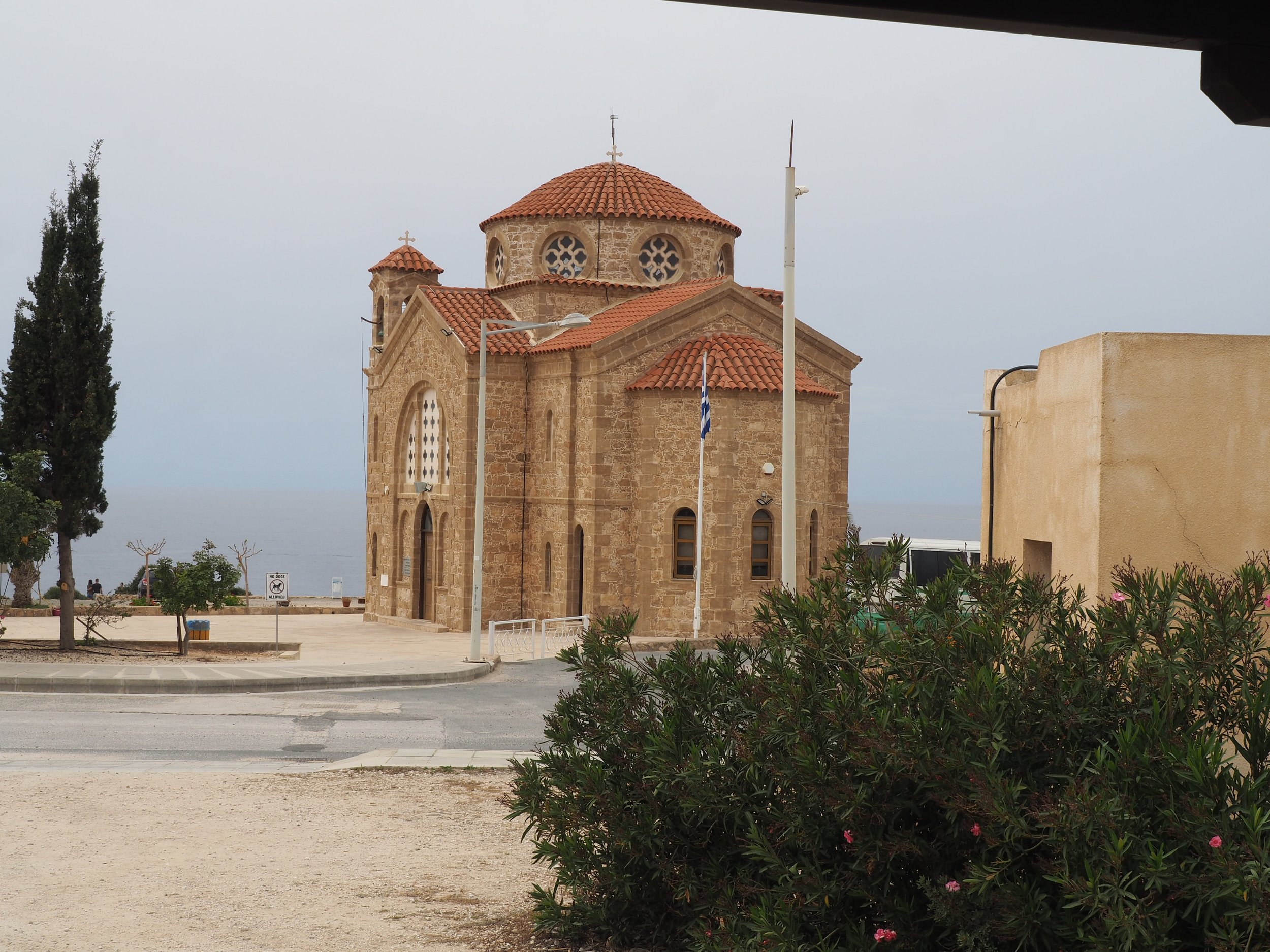







Ancient Nea Pafos
The entrance to Nea Pafos is right at the edge of the harbor. The building is very pretty, though there isn’t a museum associated with the site. The artifacts from Neo Pafos are mostly in the Pafos museum, which we went to on our way out of the city. It is a huge site. Absolutely sprawling, and with large stretches between the main locations.
It was populated during the Hellenistic period, but the main city was expanded greatly during the 4-5th century CE when it was the Roman capitol of Cyprus. It was an incredibly wealthy city and the center for a lot of trade. There isn’t a lot at the site to see, but that’s just because it hasn’t been excavated enough. Some archaeologist needs to get on this.
There is a cluster of excavated sites that are kind of a straight shot from the entrance. This is where you’ll find the most amazing mosaics. When we went, some of them were covered for protection, but the house of Theseus was mostly uncovered. Then there is the house of Dionysus (whose mosaics you will see everywhere around Pafos), a fully covered and enclosed space that allows a nice break from the weather (it was unfortunately rainy when we went, though I’m sure the shade would be appreciated on a hot day.) There are reasons why these mosaics (dating to around the 4th century CE) are so famous. They are incredibly well preserved and quite beautiful.
From there we found our way (we got lost a few times in this site) to the Asklepieion, which is tied to the worship of Asclepius, who was associated with healing. It’s next to the Agora space and the Roman Odeon (a Roman theater.) It hasn’t been excavated very thoroughly, and there are surely other buildings around that space, but there is ongoing work so that will change over time.
We then went north, and here is where things got tricky. There is a long bridge that goes from the site near the catacombs, and it ends right near the Early Christian Basilica. We tried to get to the bridge by going north in the site. But there is a gate and you can’t go back into the fenced archaeological site once you’ve left except to go back to the main entrance.
So we ended up at the northern edge of the site, which I think some people skip. It’s worth seeing, though. There is the Early Christian Basilica, which is not well-preserved but is interesting enough, and some Hellenistic rock-cut tombs. The coolest spot is the Toumpallos, which is currently thought to be an underground temple to Apollo.
We next found our way to the Castle of Saranda Kolones, heading back toward the entrance. It was originally built in the 7th century CE, and then was destroyed in 1223 by an earthquake. There is still some amount of the castle standing and it’s pretty fun to wander around.
When you look at the map, you will see a Hellenistic-Roman Teatre, Catacombs, and a few other sites that are off to the east. This is really misleading - those sites are all out of the park. So you have to leave the park and head into the town (a very short ways) to get to the rest of the sites. The southern-most site is Agia Kyriaki Chrysopolitissa, a relatively old church that is surrounded by the columns of a former church that predated and was much larger than the current church. Then heading north, you can see the theater, which wasn’t open to visit but was nice to see. Heading further north, you climb the hill to find some older rock-cut buildings. The most interesting thing of this set to visit are the catacombs. There are stairs that lead down into the catacombs (which are ground-level to the street) and this is absolutely worth checking out. This space is huge. Just absolutely huge. You feel very small in the space. The picture I’ll post doesn’t do it justice at all.
From here, you can either head down the road and back to the harbor (and parking lot), or you can go up. We went back up to check out the Greek building that had a Hellenistic mosaic (we are completists if nothing else.) We took the bridge over the street since it was a nice view. Then if you head south down the main road, there are few other small sites to look at, including an old church and another tomb.
So, give yourself a lot of time here. It’s so worth the visit. Go into the main site, make sure you don’t miss the free portions across the street, and check out the Pafos Museum so that you can see the artifacts that they collected here (well, a lot of them are in Lefkosia, but the Pafos museum was still a nice visit.)
Of course, the other part of the site is the Tomb of the Kings. It’s a completely separate site, with lots of parking right outside. There is a huge variety of types of tombs, which is really interesting. There are some very simple holes in the rocks, regular Hellenistic rock-cut tombs, and these tombs that are elaborate houses of the dead. The site was used for 7 centuries from the 4th century BCE to the 3rd century CE. The houses of the dead are the most interesting. You take the stairs down (if you can find them, otherwise you crawl through an opening in another tomb to get it - take the regular stairs if you can.) It opens into a courtyard surrounded by pillars or columns, which then open into multiple rooms that would be the burial chambers. These were generally familial tombs where the descendants would also present offerings to their ancestors in order keep their spirits happy. Or they might present the offerings to a deity on behalf of their ancestors. Different time-periods had different customs. So, make sure you visit this site as well. It’s far enough north that you probably need to drive between sites (you can walk it, but it would be a long walk.) But really need to see both sites.










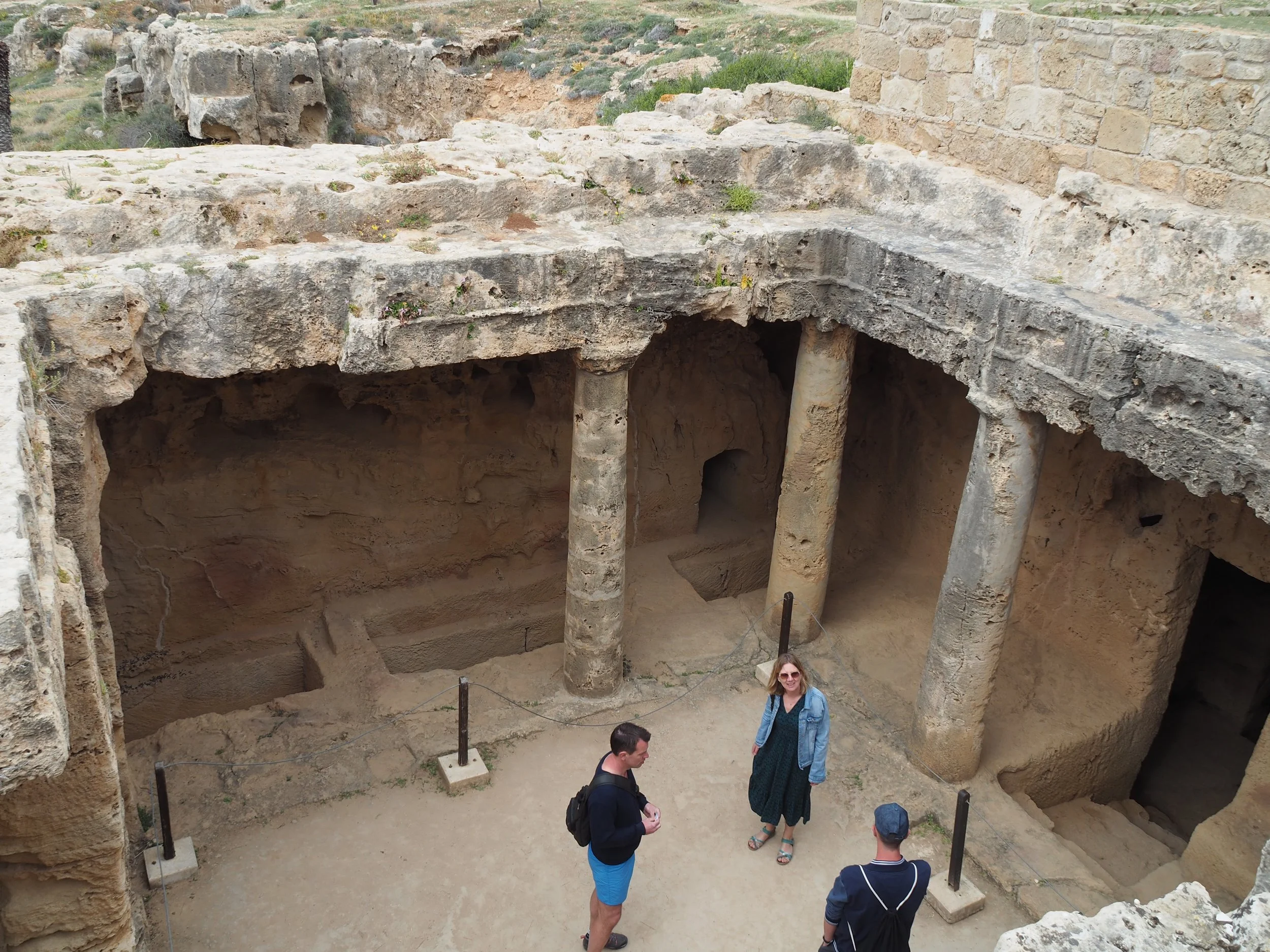





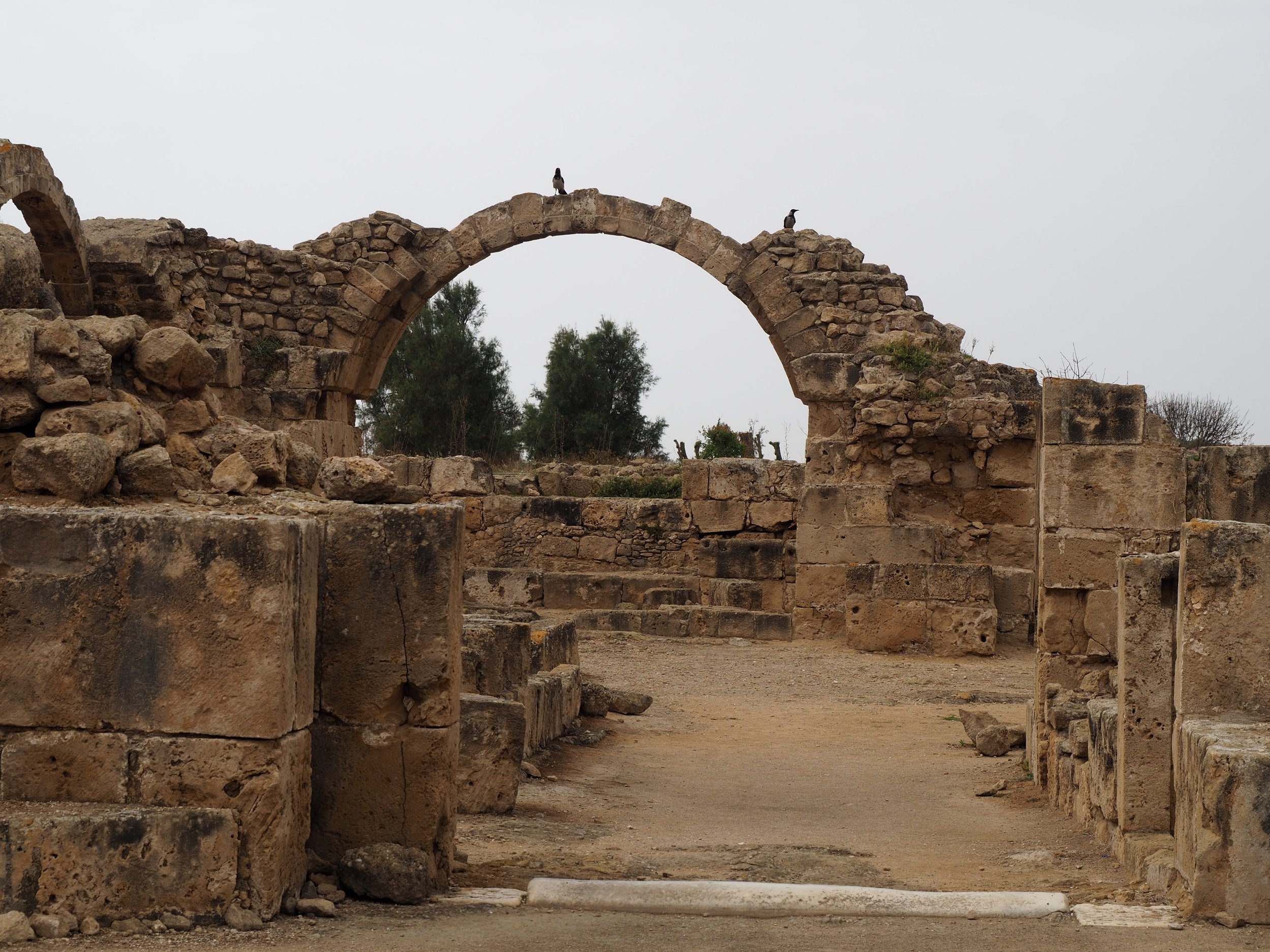



















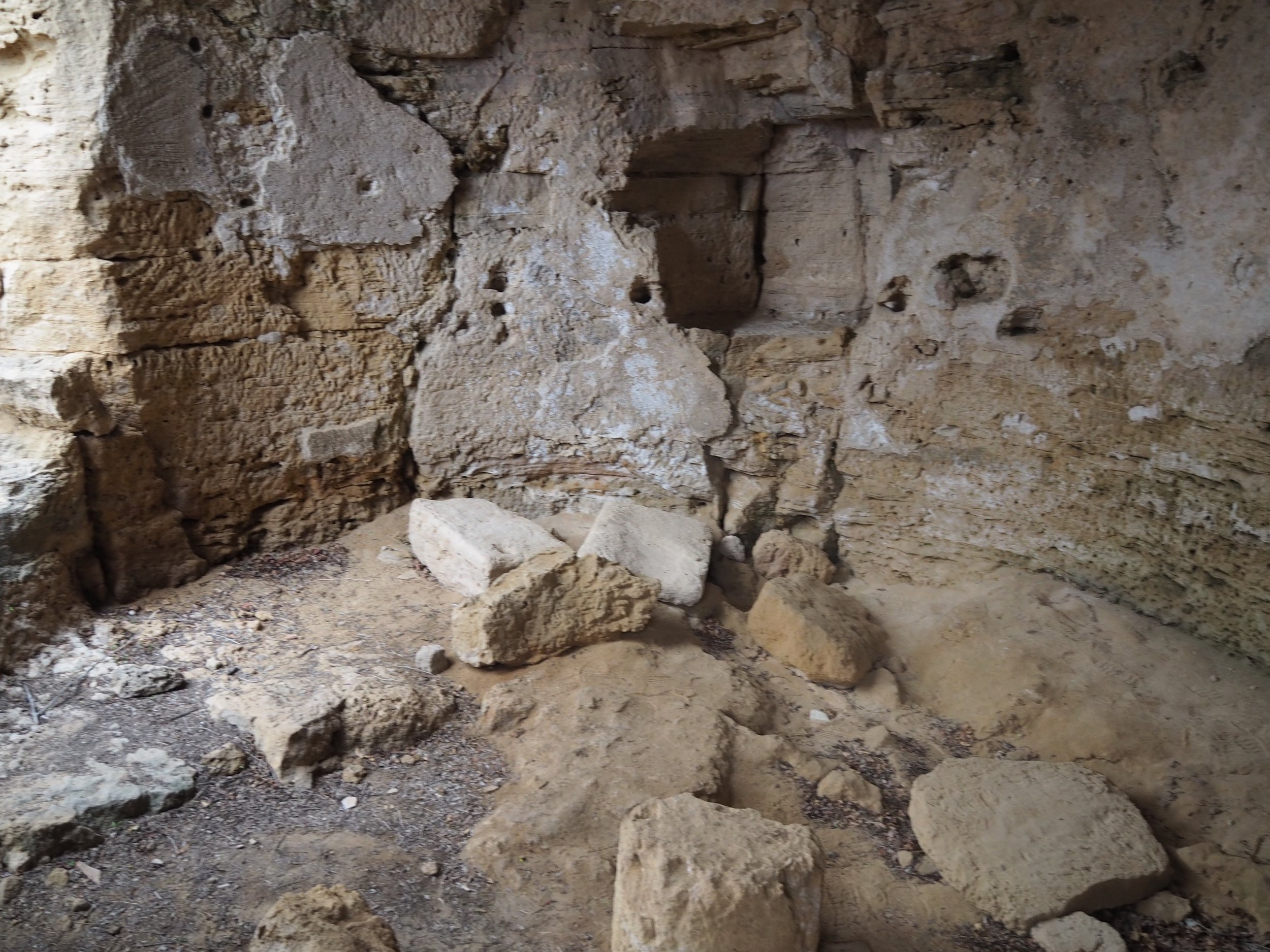
Ancient Paleo Pafos
Paleo Pafos is about 15-20 minutes driving from Nea Pafos. It’s in the town of Kouklia, and the drive up gets a little tight. We parked over near the entrance to the archaeological site. There’s probably room for about 5-6 cars there. It is a 30 second walk into the heart of town, which is where we stopped for lunch. This tiny town has about 4 really cute taverns all there in the center of town, and we ended up at Gabriels Tavern. The food was excellent, the service was fantastic, and the wine was incredible. Okay, maybe this was the best house-wine we had at any restaurant ever. Just fantastic.
The Paleo Pafos site is much smaller than Nea Pafos. It was one of the 2.50€ sites, which makes sense since it was a smaller site. They have a nice little museum on site in a building that used to be used for sugar processing (sugar was a huge product in Cyprus for export in the 14-15th century CE. The museum is only a few rooms, but there are some really interesting artifacts, and this is where you’ll find the original Leda and the Swan mosaic (some day I will figure out why so many people wanted to depict this in art, but I don’t know if I want to know) since the building where it was found has a replica.
Outside the museum is the site, with the building where the Leda and the Swan mosaic was originally found. There are the remains of a basilica, and a site which has been identified as the sanctuary of Aphrodite, which was extremely important to the history of the site. This was the original location of the important parts of Pafos, and stayed the home of Aphrodite worship in the area through the 4th century CE. They have found artifacts that date back to the 12th century CE. While this is a much smaller site, it really is worth stopping by. And make sure you have time for lunch.







Lefkosia (Nikosia)
This is the capitol of Cyprus, and most people in the country seem to not think so highly of it. Which is unfair, because the city has a lot to recommend it. While there are some sections that seem to not have weathered the pandemic very well, the old center of the city is thriving with tons of restaurants and shops. This is all near the Venetian Walls, which they’ve turned into a park. This is also the home to the Cyprus museum, which is an absolute must-visit since some of the best artifacts found on the whole island are here.
Lefkosia (I refuse to call it Nikosia because that name was given to it by the Francs for no reason because you can say Lefkosia in French) is also the easiest spot to enter Northern Cyprus. Driving up there is technically allowed, but can be tricky with car insurance and such. So we instead booked a Tours by Locals with Cemaliye Mustafa, who took us around all of the best spots to visit in the north, and it was a great way to visit.
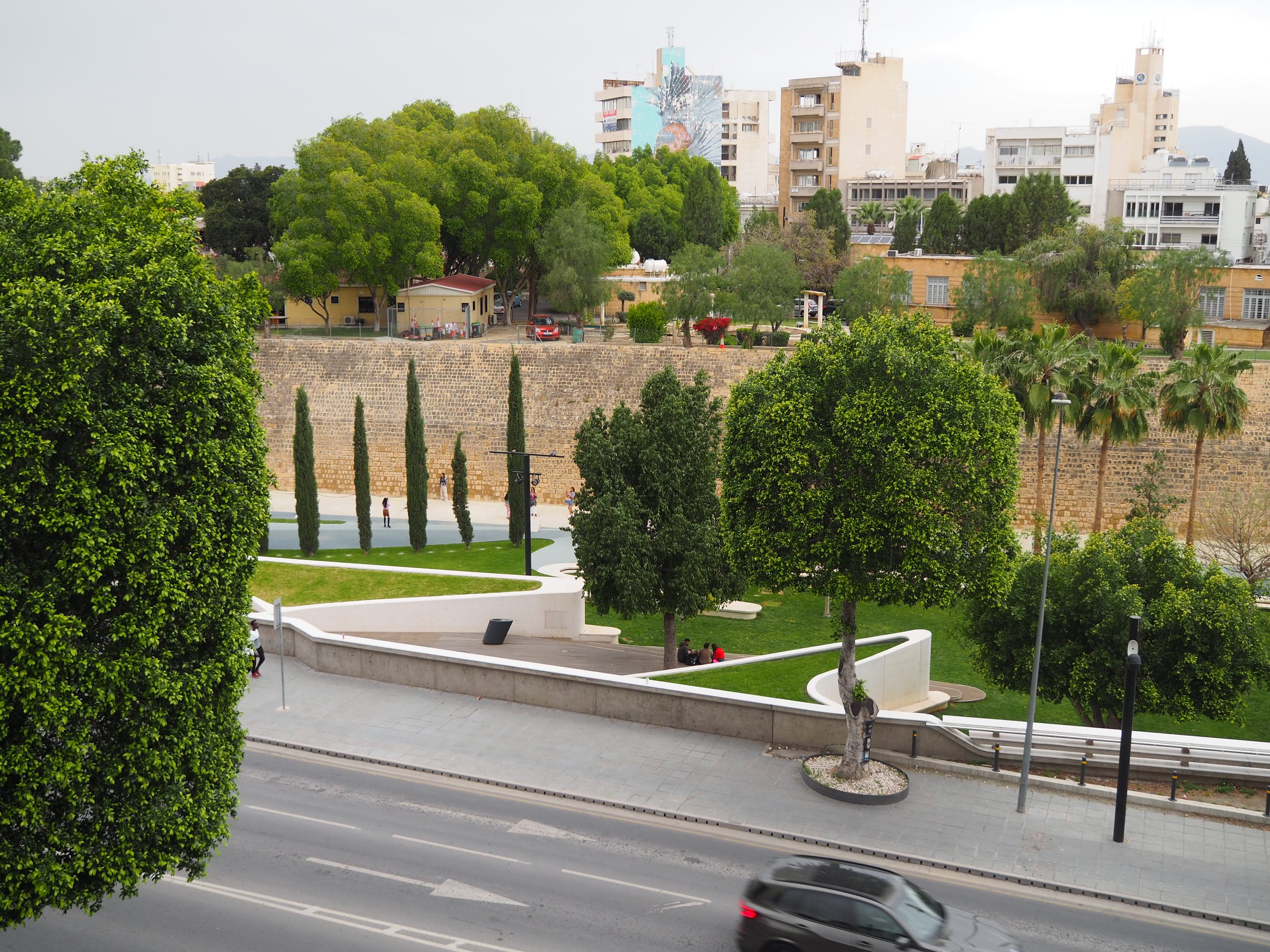
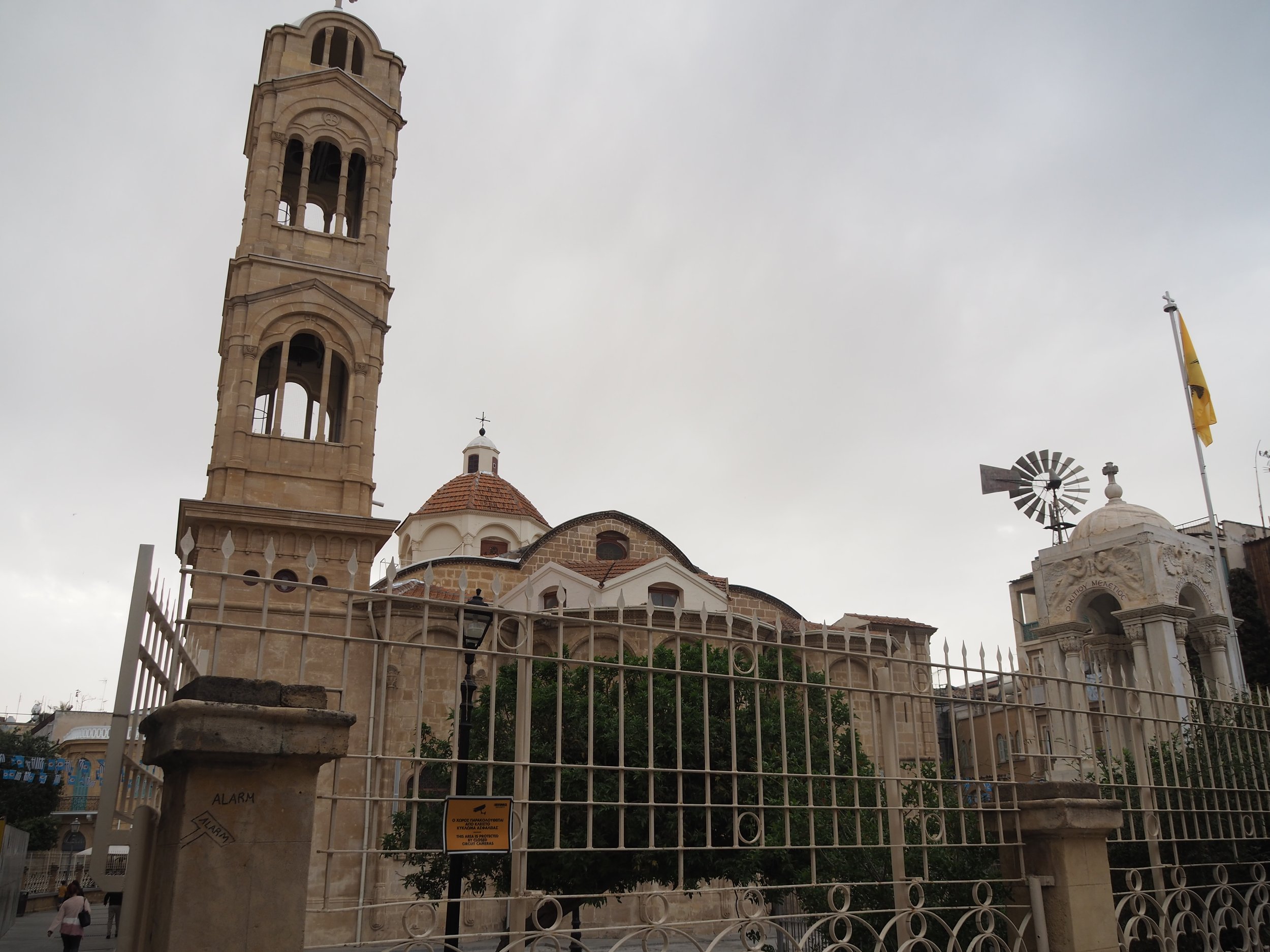







Tips and Tricks
Driving into Lefkosia from Pafos was really easy. We took the coastal road and came up from Larnaka. It was a little tricky to get to our hotel, but we found our way. We stayed at the Map Boutique Hotel, a very new and very technological hotel that is right across from the park with the Venetian Walls. We had a small balcony that overlooked the walls. Looking straight out didn’t look so great, as it was mostly the parking lot, but just to the left is the main park that was built around the walls and leads up into the old city. We were able to stop our car in front of the hotel to unload, and then they had a pass we borrowed to park for free in the lot across the street. They also had a very nice restaurant and the included breakfast was delicious. New recipe - mix eggs with tomato sauce and feta before you mix and then cook like scrambled eggs. I had them also in Athens, and they are a go-to for me now.
The main site to visit in Lefkosia is the museum. We went there on the day we were heading over to Athens. The Cyprus museum is gorgeous. Part of it isn’t as recently updated, but they had this fantastic section that had artifacts about burials that created a story about a single individual based on their skeletons. This really hit home as the point of archaeology is to tell the stories who weren’t important to have their stories written down in life. This really is a must-see museum in Cyprus. They have some really fun artifacts as well. I think my favorites were the bronze statue of Septimus Severus and his super pointy nipples (and other bits) and the massive number of clay votive offerings that were all found together and are just so much. Things I’ve never seen before and loved (well, the status I just mostly thought was hilarious.)
My other piece of advice was to just spend time in the old part of Lefkosia. The streets are all pedestrian and there’s tons of place to stop and have a snack or do some shopping. It’s just a really fun place to wander.




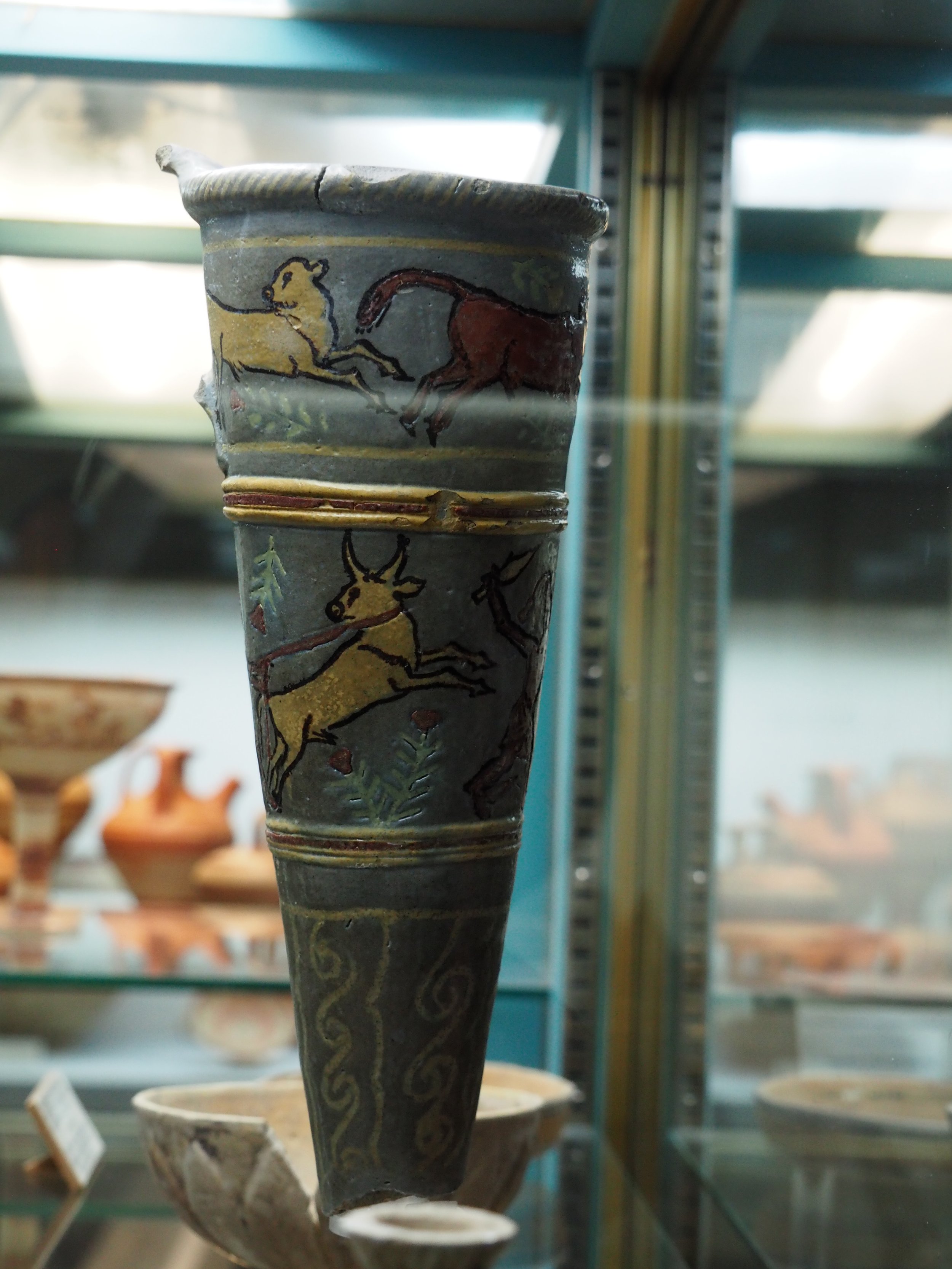











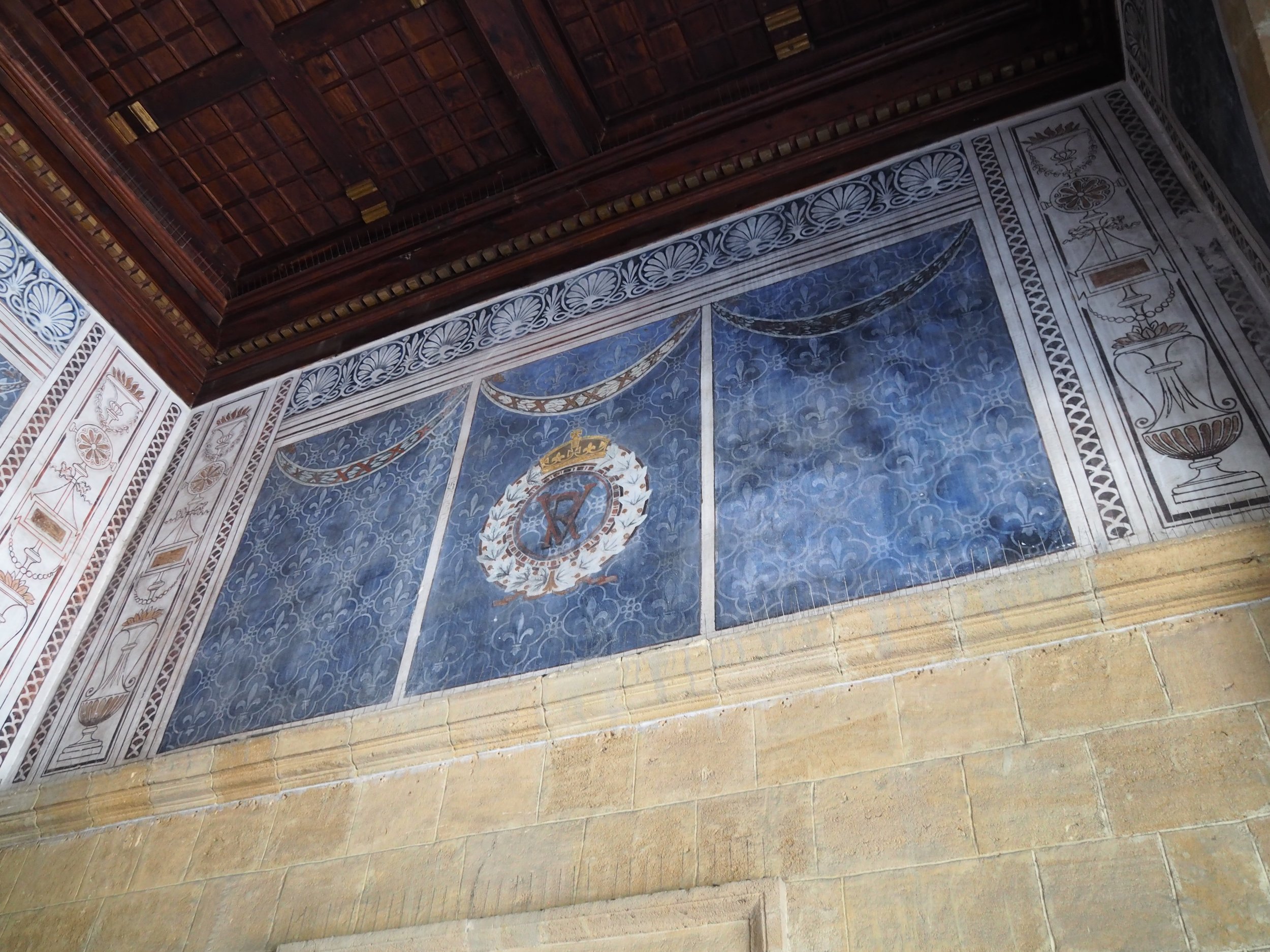
Northern Cyprus
Okay, this is going to be a bit tricky to talk about. Cyprus and the division of Cyprus and the war are still super contentious in a lot of areas. I don’t know if there will ever be a good solution, especially because the influx of immigrants from Turkey and into Northern Cyprus will make any future change to the status really difficult. Having read the Wikipedia article on the whole thing, all I can say is that I can see arguments to be made on both ends and it just goes to why I believe that religious ethnostates are a bad idea.
We started off our tour by walking through the checkpoint to go into Northern Cyprus. It was really quick. They looked at our passports, asked how long we were staying, and waved us through. And the covered walkway between the two was super charming? That was weird.
And when we go into North Cyprus? The only way I could tell we were in North Cyprus was that the signs were in Turkish and not Greek. They accepted and used Euro everywhere (preferred that over the Turkish lira.) But the part of Lefkosia north of the green line was humming. It was Ramadan, but you would never have guessed looking at how everyone was out and having their coffees and nothing seemed different. Oh, a tip? Try their Turkish Delight. It’s not like other Turkish Delight. It has a different coating? I can’t explain it, but it is so different and really delicious. There’s this huge shop right past the checkpoint, and you can try it for free. I brought home an entire box for my husband, and he loved it.
After a little bit, we met with our guide, Cemaliye. She was fantastic. Really knowledgeable, really interesting, and very flexible in our time. We could take as much or as little time as we wanted at the various stops. We started up at Bellapais Abbey. It dates back to the 13th century CE, and is partially ruined. The view from up there is really incredible. The interior is also really quite lovely. And of course the gardens were lovely and smelled incredible.
From there we headed down to Kyreneia. It is a lovely city right on the water, with the harbor that hosts the ferries that head up to Turkey. They have a huge castle right on the water. Apparently there is a museum in there, but they were doing work on the castle when we went and you couldn’t go inside. But I’m sure it is interesting inside. Google Maps describes it as “hulking” and yes, that absolutely describes that castle. Up from the harbor there is a park that opens into the busy pedestrian area with lots of shops and restaurants. The park is kind of neat because it’s also a cemetery? Sure, why not.
From there we headed to Ancient Salamis. This was also a site that was a capitol of Roman Cyprus for a time (I think it was removed from that role due to earthquakes.) Unfortunately it hasn’t been much excavated, but what there is is very impressive. The baths (ah, more Roman baths!) are extensive and have some really impressive mosaics. Interestingly, in the central courtyard, there are more mosaics and it was used as a gymnasium along with being part of the baths. There is also a Roman Theater that is pretty well preserved, although it would have been twice as high in the past. It was clearly incredibly large. There also are remains of Amphitheater next to it, though there isn’t much left of it. I really hope that someday excavations can be restarted since I’m sure there is a lot more to find there.
The last main stop on our tour was Famagusta - the Ghost Town. This is weird. So, back when the Turks invaded Northern Cyprus in 1974. At the time, there was this beachfront resort town called Famagusta. Over 400 hotels. It was hugely popular with Hollywood stars staying there regularly. It was more popular than Miami beach. Then the Turks gave everyone there 12 hours to evacuate before they came in. Most people thought it would be temporary. It wasn’t. This huge section of town, with all its buildings, was closed off to everyone but the UN peacekeepers, until about 2 years ago. Then they opened it as a place to visit for tourists. The city is slowly starting to encroach (that’s some nice beach) but the main city is just being eaten up by plants. You can still see bullet holes from the invasion. But it isn’t used by anyone. It is so weird to wander through. It is often a stop of a tour of North Cyprus, and my mom was originally not interested, but she ended up really enjoying it. So, visit. It’s definitely an unusual experience.
And visit North Cyprus. Stop at a restaurant and get kebab. Have an Efis. I hope that increased travel between the two portions of the country will increase desire for reunification based on shared background and history. But I’m not an international political specialist, and my desire for people to just forget the past “wrongs” and move forward as humans together is very unrealistic.

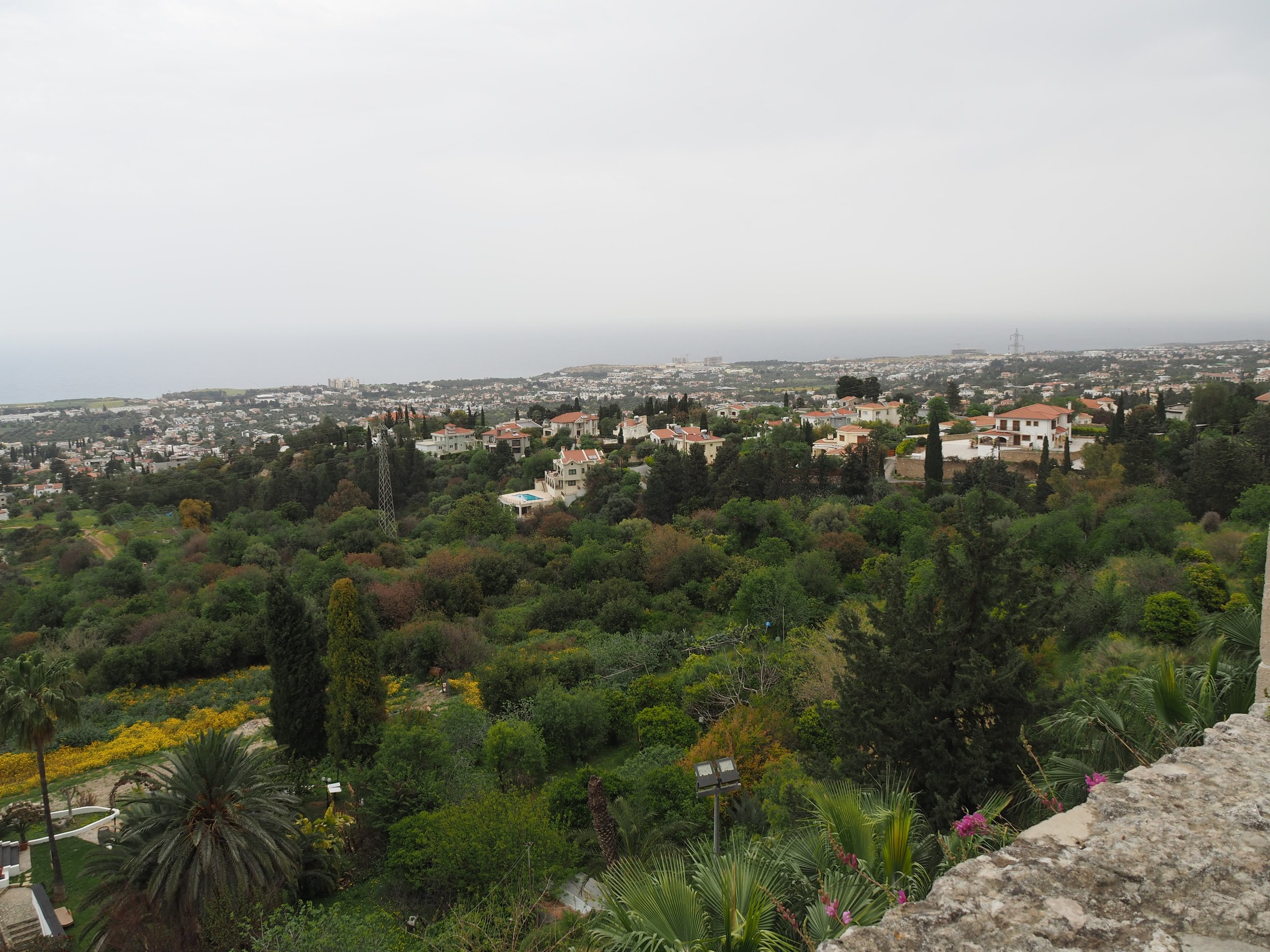






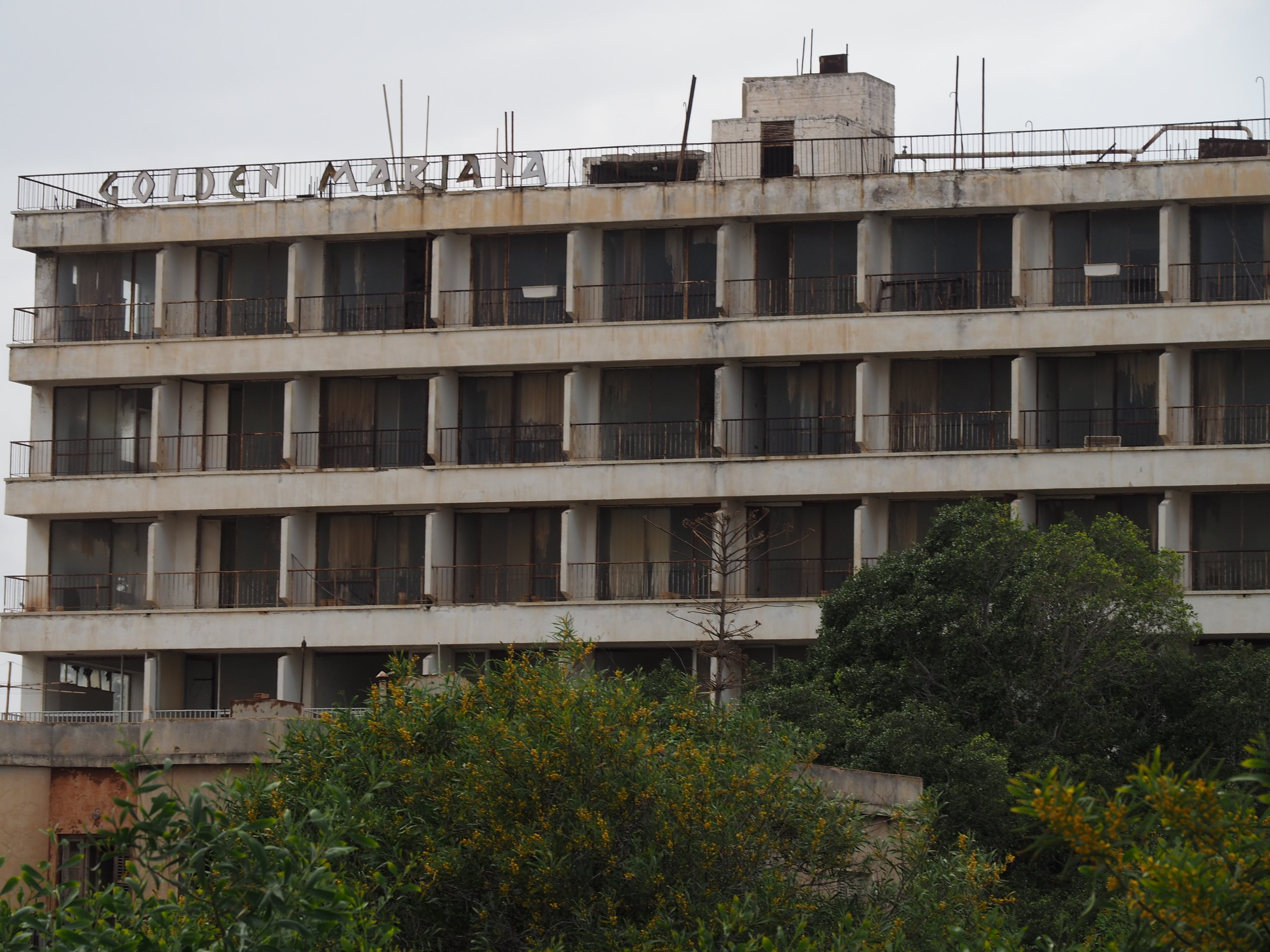







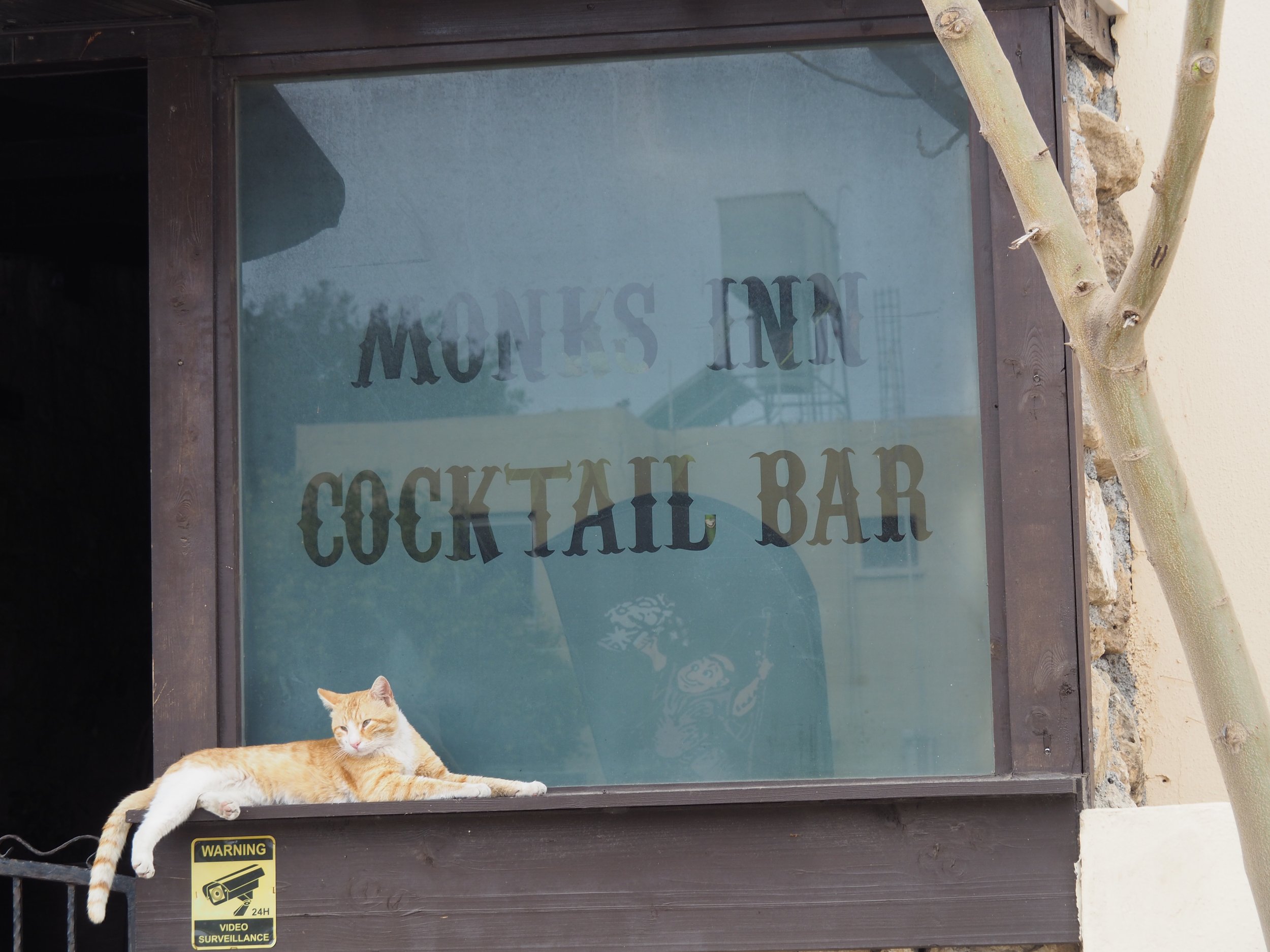





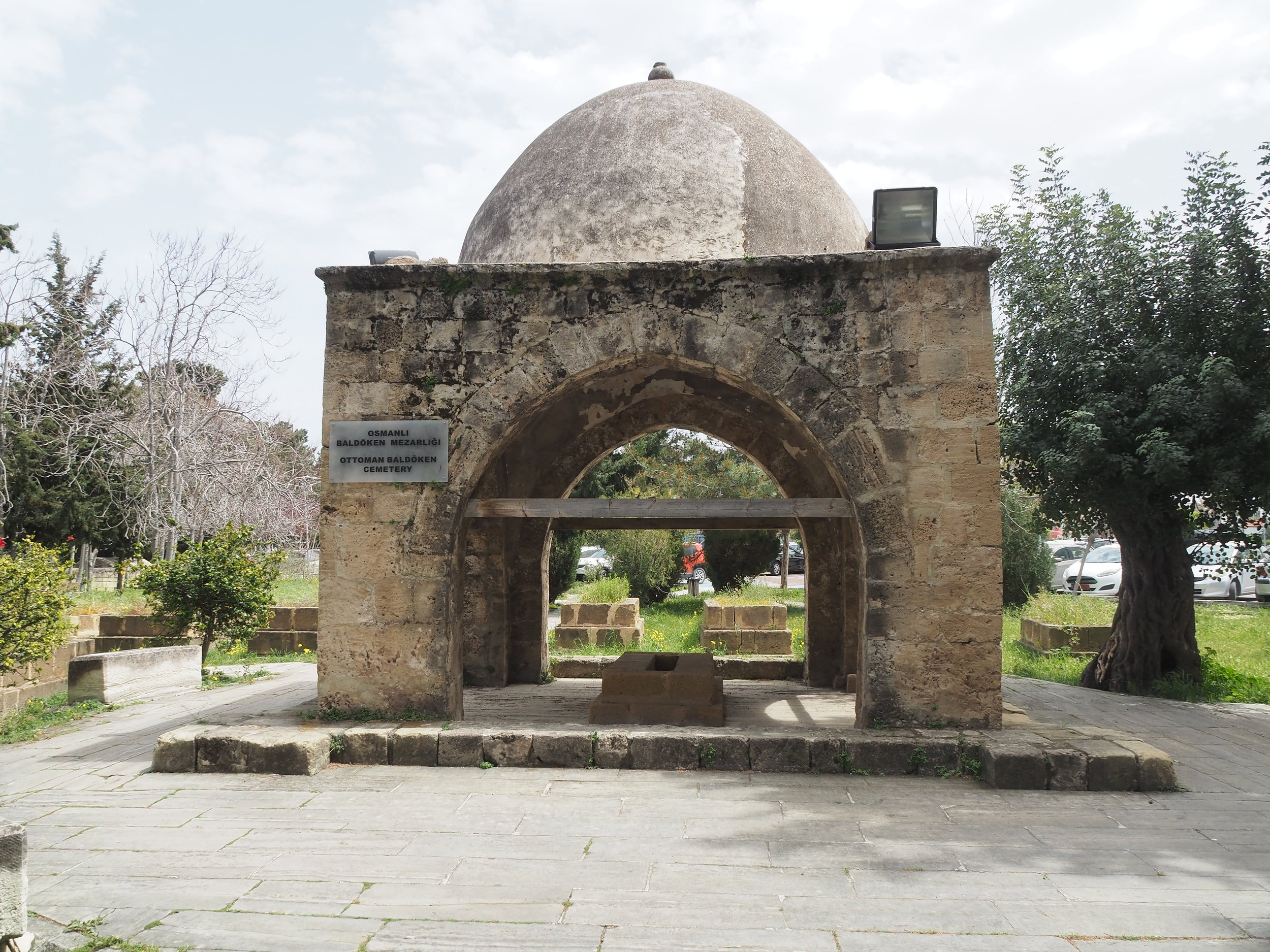











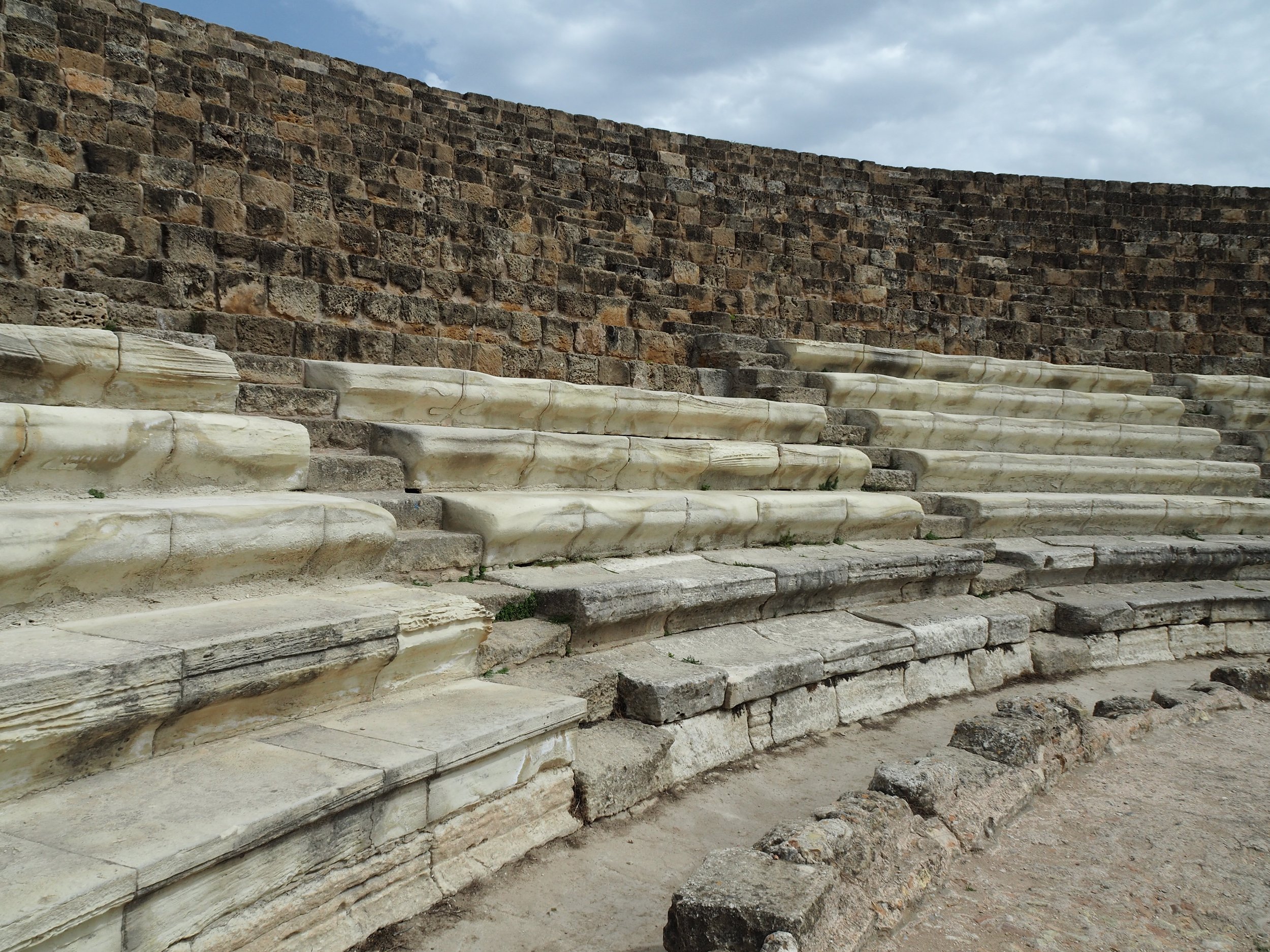



Athens
It’s Athens. You know, Athens. Home of some of the worst Greek heroes (I still hate Theseus with a passion.) But man, this city, If you love archaeology and history, it’s a must-visit. There is a reason the Acropolis is world famous. Oh, and the British Museum should return the marbles yesterday. But I’m not going to go into huge detail on Athens since this is my second visit. So we didn’t do the Acropolis Museum (which if it’s your first visit you shouldn’t miss it.) But we did go back to a few spots. It’s just such a great city. Go!







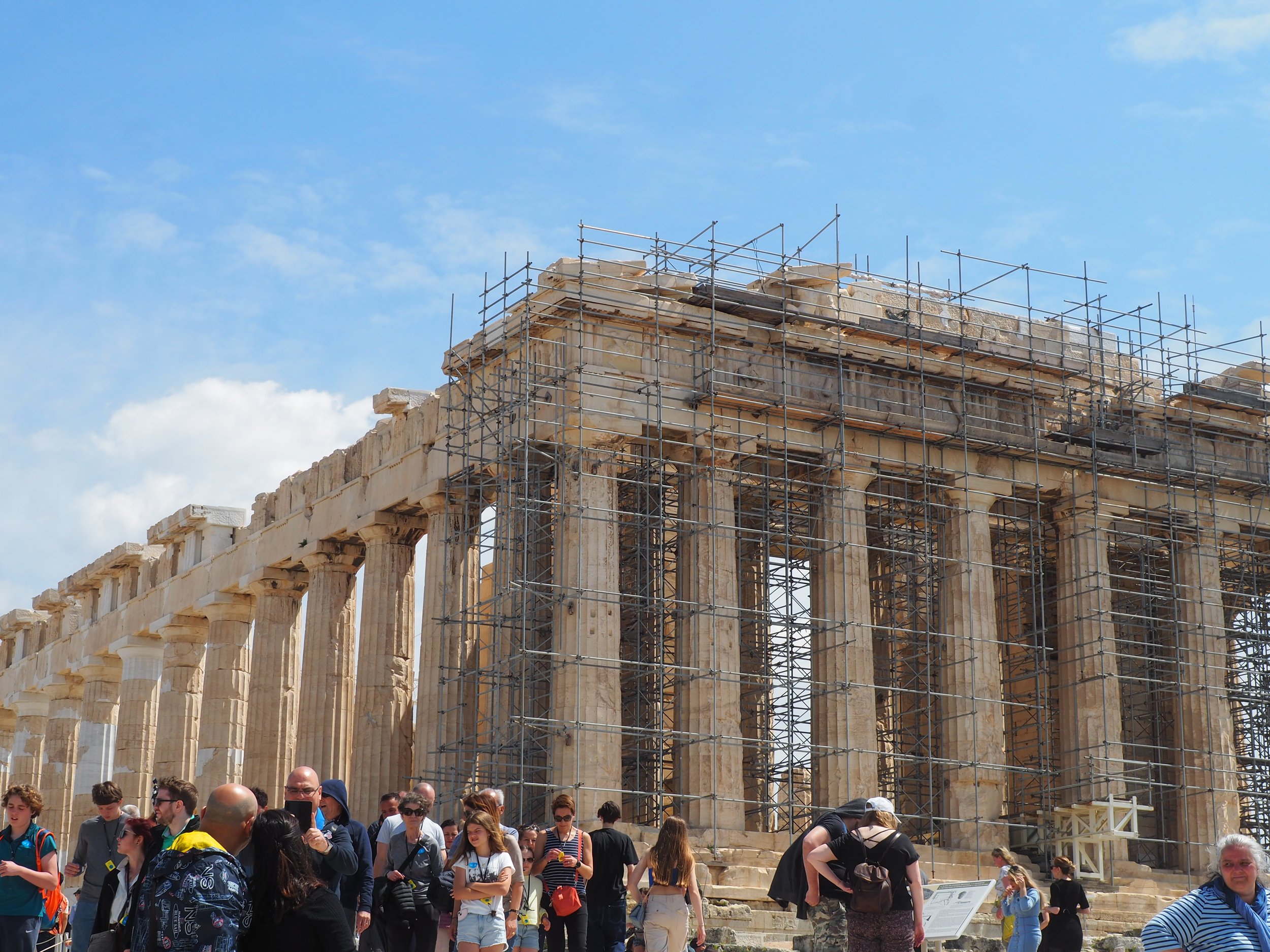

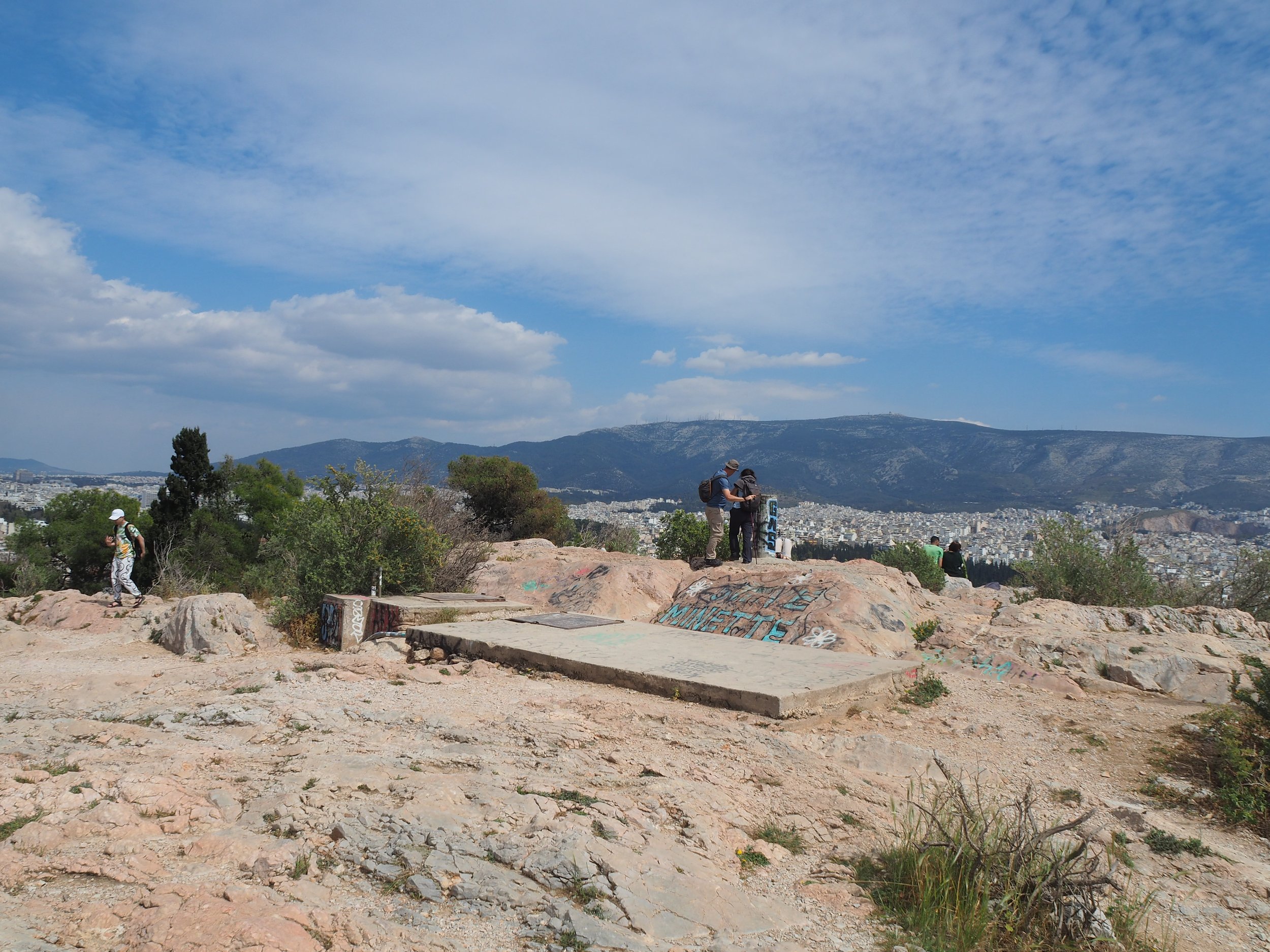

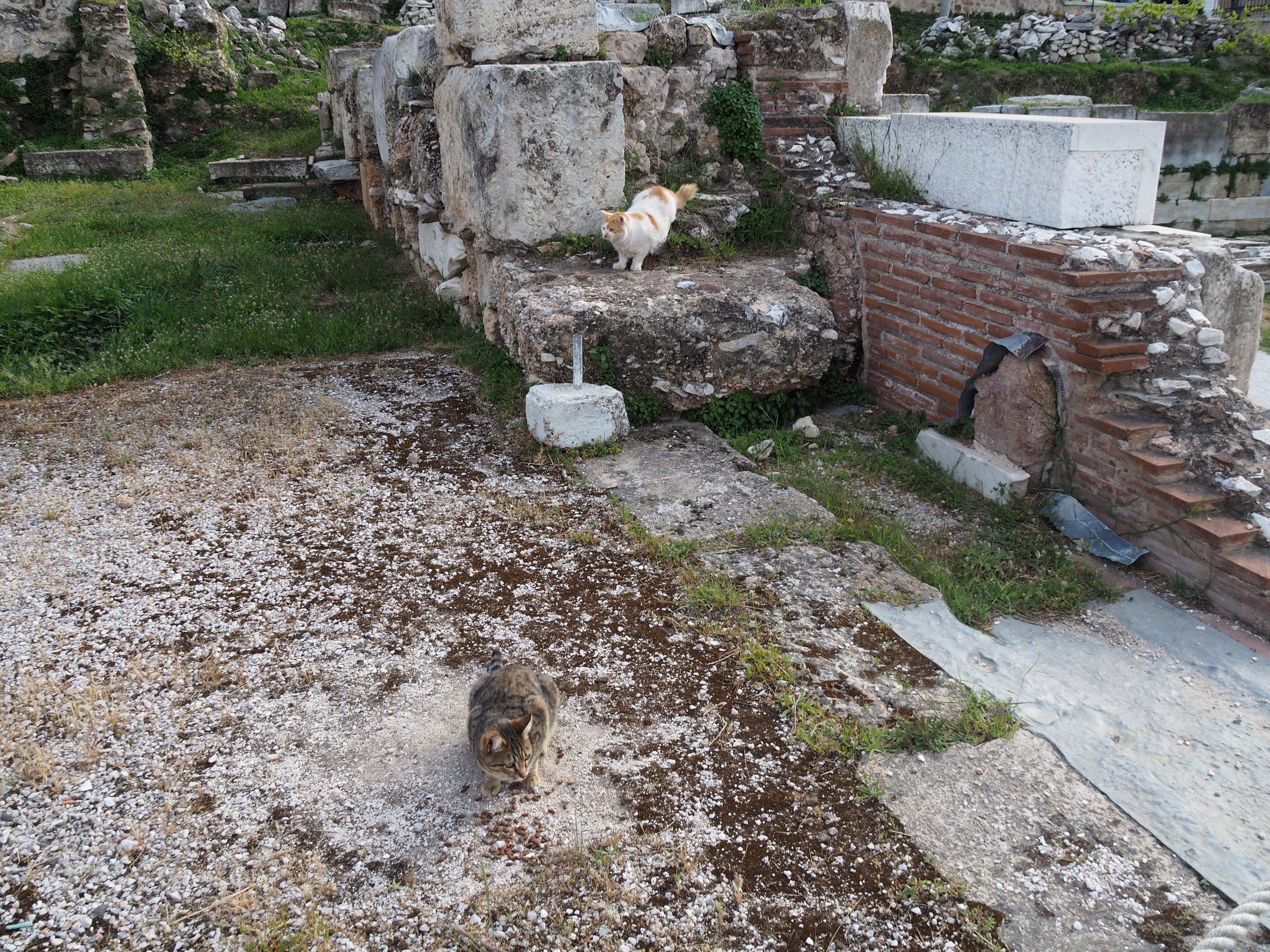









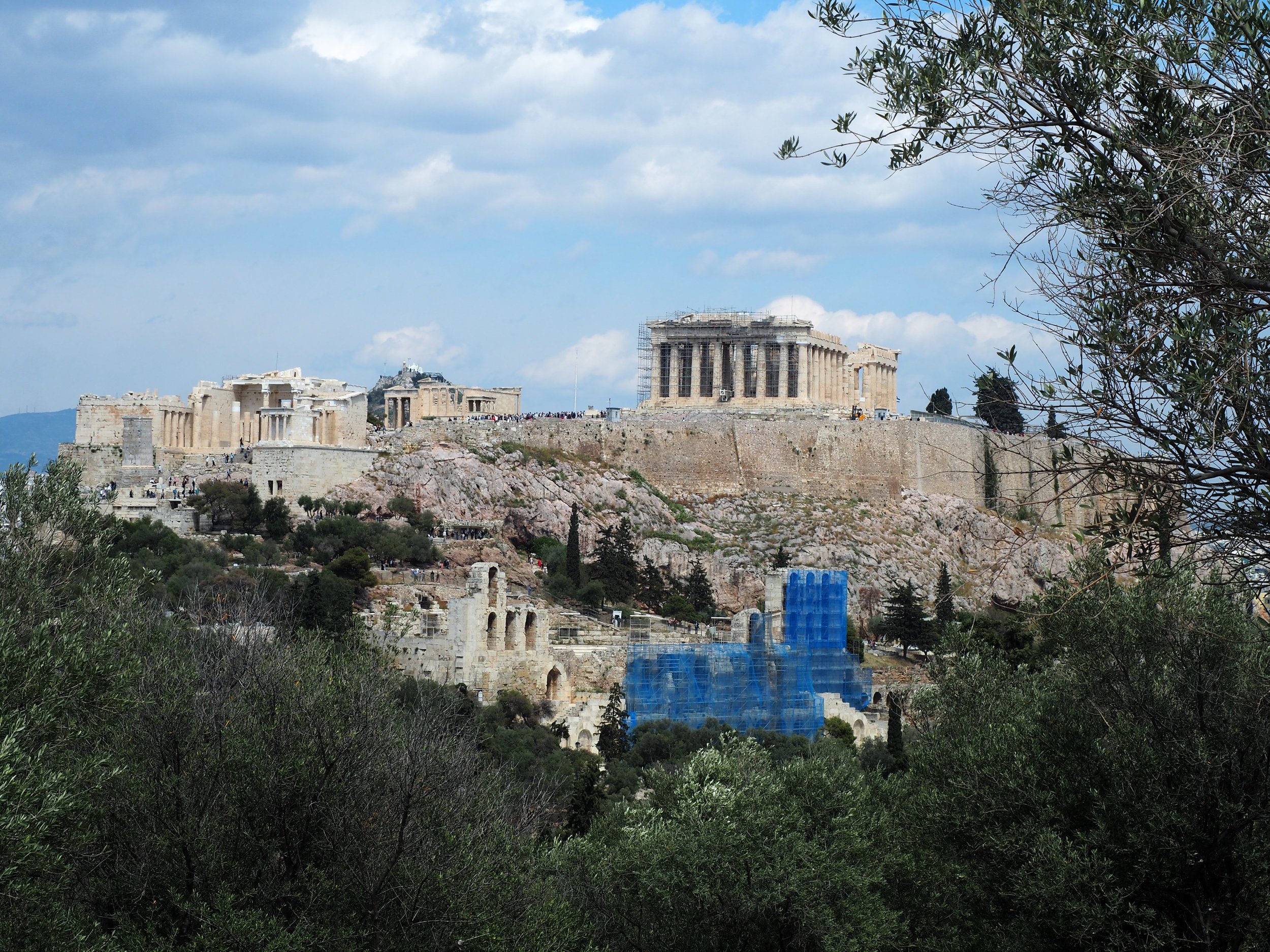
Tips and Tricks
Let’s start with our hotel. We stayed at L’Avventura Athens. We had their rooftop suite, and our balcony had a view of the Acropolis. It was incredible. The staff were super friendly, the hotel was clean and practically brand new (it was so new that their restaurant hadn’t opened yet,) and it is a quick two minute walk to the ancient Greek Agora portion of the central portion of the old city. Excellent location. And amazing views. For dinner the first night, we went to the Black Cat Cafe, just up the road. The food was excellent, and there was a black cat who came around, so truth in advertising.
We started off the morning by heading over to the restaurant that was serving breakfast for the hotel. Then we headed over to Kerameikos, which is not as busy of a site, but has some lovely tombs. It was one of the main entrances to the city and really is a nice walk. We were also able to get the multipass there (much shorter line than a lot of other sites), which allowed us into a number of other sites. They have a nice museum that has the originals of some of the tomb markers, some of which were just incredible works of art.
From there, we went to the ancient Agora. It is a very nice site, and the temple of Haphaestus is absolutely worth visiting. We didn’t spend much time as we had been there before, so we instead walked up the hill to the Hill of Ares. We hadn’t visited that on our last visit, so we climbed up to the top of the hill, which does have a lovely view, but was very slippery and very crowded. So, nice to visit, but I’m not sad we didn’t do that on our first trip. We popped up to the Acropolis (we already had the ticket, so it was quick to head in) and wandered around a little. It was nice to poke around again, though it was very crowded. The recommendation is always to go in early, which is good advice. We were there around midday, and it was really busy.
Next we walked over to Philopappos Park, another place we hadn’t been before. We stopped at Dionysos Zonar’s, right at the base of the park, and that was excellent. Really good food and great wine (as always.) Going into the park, we walked up to the Philopappos Monument. It really has an amazing view from up there, and it’s a nice walk. Once again a place that we hadn’t been before and enjoyed stopping in.
Then we took a cab over to the National Museum. The museum is a must-see if you are visiting Athens for the first time. It has some really famous artifacts - like the mask of Agamemnon (though it’s a bit controversial artifact, and don’t get me started on Schliemann) and the Antikythera Mechanism. It is a mix of older museum design and some newer portions, so the quality of the displays is a bit of a mix. But the quality of the artifacts are incredible. There were some rooms closed off (apparently a remnant from Covid), but it is a really fantastic museum.
We finished off the day walking back to our hotel. We enjoyed some incredible wine on the balcony, and then headed down for dinner by the Agora. I think it was Mousecafe, but at this point I could be wrong in my memory. All the restaurants along the Agora are super cute, and it’s hard to find bad food in Athens. The next day we were able to get a cab to the Athens airport and head back to the US.
This was a great way to see Cyprus. It’s hard to get there from the US, but the stopover in Athens really worked and was just so much fun. Go to Cyprus, go to Athens, email me if you need advice!






